Among my unusual experiences in Austria was meeting other Jews my age (now 70) who grew up here. In my first months in Vienna I wanted to swim and so contacted a group run by Hakoah, the Jewish sports club that was revived after the Second World War.
I was told there was a shortage of lane space in the late-Covid swim environment, and I also understood by inference that my age and speed were not at the group’s level. But the coordinator kindly told me about another group of swimmers, previously or presently affiliated with Hakoah, that meets informally at one of Vienna’s public pools, Stadthallenband, and she introduced me to Bobby Beig.
Bobby is a very good and fit swimmer—at 75 he still competes periodically with Hakoah—and a very gracious and interesting man. His parents returned to Austria after the Second World War, so he is Jewish and born and raised in Vienna. To me, the American child of a Vienna-born refugee, this was extraordinary, almost unthinkable. I had known refugees, other than my mother—my father’s consulting business partner, a cousin, relatives when I was young—but before meeting Bobby (and then his friend Shimon), I had never met anyone Jewish who had grown-up and lived in Austria.
The novelty of our meeting was I think mutual. The Austrian government began offering passports to the direct descendants of refugees in 2021; my sister and I were among the earliest to apply. I was among the first, or perhaps the first 70-year-old to knock at the Hakoah swim group’s door. I have met other Austrians, but Bobby’s story was particularly compelling to me, so I asked him to allow me work with him on this oral history.
Following are a few recorded interviews—my apologies for the quality of the recordings–together with notes from our conversations, which were later edited by me and by Bobby. Listening, you will hear the story of two young people who escaped to England in the 1930’s, met, and returned together to Vienna in 1946 before Bobby’s birth in 1948. You will learn how they got out and why they came back, about their work, their lives and their politics, and you will hear about Bobby’s grandmother who survived the concentration camp at Theresienstadt and lived with them. You will learn about Bobby’s years in grammar school and at the University of Vienna, about his growing interest in the sciences, his graduate studies, his teaching and working years as a physicist, and about his own family. You will begin to know who Bobby is.
I did these interviews to satisfy my personal interest. There is something familiar about Bobby, like a brother or a cousin, despite the significant differences between us, and there is something hauntingly familiar about Austria. Interviewing him I thought might explain these impressions to me. They did and they did not.
These recordings were also for Bobby’s grandchildren, so that they can know a part of where they come from, and permit themselves to be different. Jews are interesting, somewhat unusual people. We have the capacity for closeness and love with the people around us, but we are also unlike others, and there are bonds between us despite time and distance.
These recordings are for Bobby, who can listen to his own thoughtfulness, be reminded that he is unusual and that he has had a fulfilling and successful life.
Finally, these recordings are dedicated to Louise, Bobby’s partner, with thanks for the warm welcome in her heart and household, for wonderful meals at her apartment, and for ever-better conversations, as I slowly learn German, the language we left behind us and forgot.
Larry Sicular
January 2024
Bobby Beig, Oral History Notes
Vienna, Austria
Notes on conversations, with some clarifications. These were recorded on April 28, May 5 and May 12, 2023 and February 5 and May 26, 2024
Session 1, Recordings 1 and 2
These recordings are for two people who are still very small, Bobby’s grandchildren, although we might decide that they will be of more general interest.
Bobby grew up in an unusual family, in Vienna, after the War. His outline:
- Identity.
- What is a Jew.
- Growing up in Vienna
How far should we go in defining identity? I am not sure how far we should go. How we see ourselves and how others see us. I have a problem when an identity becomes highly noted—when people try to find their roots in a vague way—not like you coming to Vienna—but I want to distance myself from that. But there is a bare minimum that my grandchildren should know.
An identity requires distinguishability. How we are seen and how we see ourselves, but I want to distance myself from anything mythical, I want something more light, something which is a bare minimum that my grandchildren should know when they want to know where they come from.
Identity is a number of features, of properties, which I have, which includes experiences, things which I could list and refer to one by one. Defining this is going to be tough, and there is one more complication, as I now am a 75 year old person. It’s not quite the same person. There is the person I am now, and the person who I was when I grew up. These are two different things. Of course I can look at things from my present point of view, and imagine how I perceived my life as a child.
Things that define me today: I am a scientist. I am striving for definitions and generality, my strength and my weakness. Being a Jew is one of them, probably not the most important thing. Without it, my life – at least the first 15 or 20 years of my life – cannot be explained. The concept of a Jew is something baffling, even controversial. Jews are first and foremost a religion, I guess; they are a tribe, by a gene test I did some time ago, I was identified as 100% Ashkenazi Jew, but I have no idea how accurate this is—there is probably no such thing as a pure Jew. There are a number of things I associate with Jews, complicated things, there is a history of persecution of Jews, and they are associated with a number of stereotypes—these are not necessarily all wrong, we identify ourselves by some of them—smart people; we have a tendency for feeling guilty, a strong conscience. The one thing I fully identify with, and which I associate with Jewry, is humor. This is to me I think the most important feature. There is something as a Jewish humor. It has been said that there are many things of which one can accuse Jews. We cannot be accused of a lack of humor. My father thought of himself as having a good sense of humor, but it was actually my mother who had a very natural sense of humor.
My parents met in London in about 1940. They both were emigrants from Austria; they had emigrated for racial reasons. My mother was Jewish; my father’s parents had converted to Protestantism; my father was baptized as a Protestant. They met in the middle of a group of exiled Austrians, maybe drawn together by homesickness. My father had emigrated with his mother; his father had already died. My mother had come to England on a Kinder transport.
The organization where they met was called Young Austria. It was quite unique in a way.
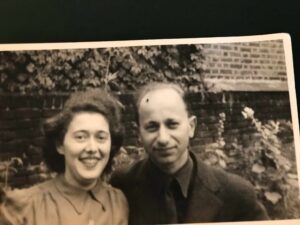
The unusualness of my upbringing in Vienna goes back to the unusualness of this group. A group of people from Austria, opposed to Nazism; in the jargon of socialists/communists, they were anti-fascists. Jewishness was not the main thing in this group. It was political. This group was communist, Stalinist. This group of people was ordered after the war to return to Austria, probably by Moscow, but that has to be researched. My ‘aunt’, actually my grandmother’s cousin—as I grew up, she would visit us regularly, but she would never have dreamed of returning to Vienna. That is true of most people I know, certainly of your mother. My parents came back to Vienna in 1946. I was born in 1948.
Maybe we could change perspective a little bit here, and talk how I perceived these things when I was a child.
My mother was from a petty bourgeois family; my father’s family was slightly more bourgeois. My father’s family were Hungarian and partly also from Czechoslovakia. The roots of my mother’s family were wholly Czech. In both cases they had been in Vienna for some generations.
My mother grew up in the 2nd district in an almost entirely Jewish area; she had almost no non-Jewish schoolmates. This was in Leopoldstadt, also known as Matzesinsel—a word that was used back then and occasionally today. She grew up in Tempelgasse, near the synagogue which was burned down in Kristallnacht, in a fairly modest environment; they were not poor, they even had for a time a farm girl to help them, she would sleep in the kitchen. They were affluent enough to have that kind of help at home.
My father’s father was a Prokurist (German), an authorized signatory. He worked for the Credit Anstalt (CA), one of the leading banks in Austria, now with Bank Austria. But he died in the early 1930’s, so my father was basically raised by his mother. My father was Protestant by religion, but in those days in Vienna he was clearly discernable as a Jew. He attended a grammar school in Vienna in the Döbling district, the same grammar school that my daughter attended, much later. There were the pro-Nazi kids and pro-Jewish kids; my father was on the side of the Jews; of course there was antisemitism.
There are several things that could be said in this connection. There is an reference to this in a novel written by the nephew of a well-known Austrian writer, also my father’s schoolmate, an article on the last days of the Jewish boys in this school. The book is in German, by the Austrian-British author Michael Stone, Das Blindeninstitut. Bruchstück einer Jugend. Kupfergraben, Berlin 1991. My father is mentioned in the book, in one or two sentences; apparently he was bad in math, which was noted in the article. The teacher was an anti-semite. “With one equation with two variables, the Talmud won’t help you.” (Very much later, my father was irritated by my interest in mathematics.)
There was an exodus on this particular date of the Jewish children from this school. The other children saw them leave, with strange feelings, and also the professors. One of the children who left was the math teacher’s best student. The teacher was shocked; he didn’t know he was Jewish. The child showed something that referred to his father’s suicide after the Anschluss. This is very interesting. It shows the relationships before the war, between Jews and non-Jews. Yet this was before the Holocaust—our present perception is dominated by the Holocaust–yet even then everyone knew that something important was happening.
My father’s family left–my father’s mother was entitled to a retirement pension because she was widowed, a pension that she received from the bank. She was able to get this paid out and to use this money to leave; it was just she and my father. They were not members of the Jewish community; I think they left in a Quaker transport. But she left behind her sister and her mother; both of whom perished.
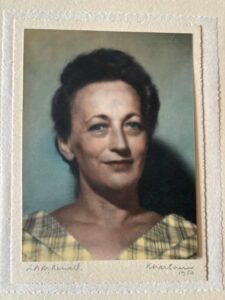
In my mother’s family, her brother had already left for Israel, and my mother was sent on a Kinder transport. My grandparents were kicked out of their apartment, and lived in another apartment where a number of people were concentrated. They were then sent to a concentration camp, Theresienstadt. My grandfather died there a few days after liberation by the Red Army. After the war, my grandmother came back to Vienna and stayed in a home for displaced people. They had both contracted typhus; she survived with some heart condition. He (my grandfather) was burned (cremated), for hygienic reasons, but his urn is nevertheless buried in the Jewish cemetery, which is normally not allowed. My grandmother is also buried there, as is my mother.
My father was not quite 16 in March 1938 (he was born in October 1922). The Gestapo once picked him up for a night but then sent home. A woman living opposite to their house in Biedergasse had made an allegation that a Jewish boy had thrown a stone at a Hitler picture in her window; and that of course was a signal to Grandmother that they could not stay there. She had been used to a comfortable life, even as a widow, it was a brave decision on her part. In addition she left her sister and her mother, whom she was close to. My grandmother told me, on her visits to Vienna after the war, that her mother came to Döbling from the 6th district, and would come to their place every day with the shopping and did the cooking. Her mother had been a good cook and housekeeper.
Session 1, Recording 3
I grew up in an unusual family, as Larry has said. This is to some degree in retrospect. For some time, I wasn’t aware of it. There were some things though that I noticed and also I must say that I liked. The fathers of other children in elementary school; most of them had been soldiers in the German army. What that meant or was, on average, that the parents of my school mates were much older than my parents. For the parents of my schoolmates, the time of the war was lost to these parents, whereas this wasn’t the case for my parents in England. I was proud that my parents were young.
The other thing was my parents had a lot of friends; I knew them. I would call them by their first names, without calling them “uncle” which was more typical. My parents were modern in questions of education. For example, they did not believe in physical punishment. I was slapped by my father, just once in my life, for a totally bad reason. 90% of my school mates were Catholics; I was officially without religion, so when there was religion in class, I was doing homework elsewhere. These were the differences.
My parents being communists, there was a contempt of religion. They also considered Judaism to be unimportant somehow. Communism in those days was opposed for example to Zionism. Although my mother had a brother in Israel, who had fled to then Palestine, that was almost a non topic. They had little contact. I had some ideas why that was the case, but that’s a bit complicated. I lived with my parents; I had no siblings. There was my grandmother, a Holocaust survivor, as one would say today. Of course at the time I did not know what a Holocaust survivor was, nor what a Jew was.
She was an important person for me. She adored me; for her I could do no wrong. There were some things that maybe were strange. On weekends, she insisted on not using the elevators; that was a matter of argument—she had a heart condition. I didn’t understand these things. At some point my parents decided they had to explain something to me. I was playing in a park, near the Belvedere near where we lived, and some other kids were singing an antisemitic song, which I found funny. I came home and sang it, and my mother decided she had to explain. Well you know, she explained the non-use of the elevator, her (grandmother) adhering to what she considered the rules of the Jewish religion. This is how I discovered being Jewish. I was in elementary school already by then.
Of course this is an event that I remember. It was certainly a sign of difference, I’m not sure how important it was. I don’t remember that my early school years were affected by this. I had a school teacher a man, whom I liked and who liked me. He certainly knew my family background, yet I was the only Jew in a class of 30. My parents’ friends were practically all Jews. They had children whom I knew.
When my parents came back (to Austria) in 1946, my father would have been 24 and my mother 22. My mother had no special training; she had simple office jobs. My father had mostly done physical work. For him, well his dream would have been to be a lawyer, but since he couldn’t finish his school career in Austria—maybe he could have tried–he thought he needed to work to support his family. Immediately when they came back, there was no one here expecting them, other than the communist party. The party gave them some help, an apartment, perhaps previously aryanized apartments. My father worked for some time for an American newspaper, which he had to be allowed to do by the Party—maybe they thought he could get some information about the Americans. Vienna had been heavily affected by air raids in WW2. And of course there was poverty. At some stage, my mother was asked to lead a group of young people. Most of these young guys were not gangsters, but they were more or less delinquent young men. She had to deal with them—some of them had become violent. My mother was proud at having been able to handle these young kids. My mother wasn’t very fearful.
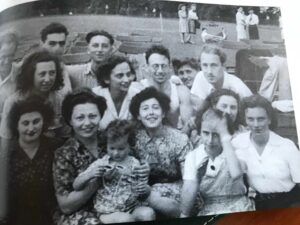
My father, after some time, he worked for the steel firm Wagner Biro, which was owned by the Russians. Later he worked for an insurance company. My mother worked for a logistics service, that was owned by the communist party. When my father’s salary was high enough, she stopped working.
My parents friends were members of the communist party. Some worked for the party, but most of them had other jobs. They were also friends and met on a private basis. My parents did small amounts of volunteer work for the party for a number of years, but that stopped after some time. There was an organization within the party, trying to help people rent apartments. One could be a member of that organization, and they collected fees for membership.
Of my grandmother’s experience in Theresienstadt I know little; it was not really discussed. My mother told me much later, after her death, that my grandmother would have been quite willing to talk about her own experience, but somehow nobody would have wanted to listen, including her, her daughter. The story that she told me was my grandfather had some function as a guard. The Nazis used Jews in some kind of self-organization in the camps. There was something like this at Theresienstadt. My grandmother said something about this to my mother, about this role of her husband, in a proud way. My mother recalled having said something nasty to her. This must have been connected to the fact that my parents, particularly being communists, believed in resistance to the Nazis. This role was to them a form of collaboration. My mother described herself as something of a Daddy’s girl. The “wrong” person had survived. This contradicted her image of him. My mother’s negative reaction ended the conversation; my grandmother was offended.
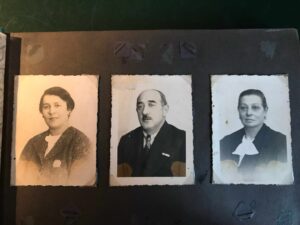
After the Anschluss, my grandfather tried to look after the family, somehow to postpone the deportations, not only for his wife, but also for his mother in law. My grandmother had two brothers. One, Otto Fischer, was a football star and later football coach who perished in Latvija.
(Note added: there is a book about his life: “Otto ‘Schloime’ Fischer – a Jewish football star”, by A. Juraske.) The other one, Hugo Fischer, was in forced labor. There were small labor camps all over Austria. When these labor camps were shut down, everyone went back to their places, and then they were all deported to death camps. Thus Hugo, together with his wife and daughter, ended up in Auschwitz.
My parents came back in 1946. My grandmother had been in a home after the liberation; after some time, they took her in to live with them because they considered it their duty. Much later, I did not think this was such a good decision. But this is what they did. She was there when I was born. She did no professional work of any kind; for women of her upbringing this was not an option. She lived with us; at the time when my mother did office work in the logistics firm, she would sometimes cook in the evening, but my grandmother would warm up the lunch for us to have together. Then she disappeared for a nap; the story was that even as a young woman she napped. That was talked about by my parents in a derogatory fashion. She wasn’t as much respected as I think she deserved.
My grandmother was there when I came home from school. I felt close to her. She passed away in 1976, when I was 28. To my grandmother, being Jewish was an obvious thing. I cannot recall. Of course, there were situations where this would have been obvious, but it was not something that she carried forward. There were funny scenes. Like many Jews, she was from a social democratic background, so having a social democratic chancellor that was also Jewish, Kreisky, was somehow wonderful. The fact that he was critical of Israel, where her son lived, didn’t really matter.
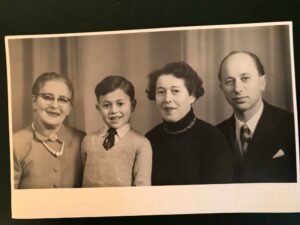
My mother’s brother was never happy in Israel and lost an arm in an accident. When he died, my parents consulted the family doctor, who was from the same circle: he said to my mother that her mother would not survive the news. So my parents decided that my grandmother would not know of his death. They hid it from her, and even wrote fake letters and they took away letters. She did not know. They somehow had him vanish. Maybe this is something that relates back to communist ideology, at least it’s not completely unrelated. When Mao died, he officially didn’t die. They had actors appear on the balcony, pretending to be Mao for some time. My grandmother talked about her son, and they kept the subject down.
There were some things that separated me from my school mates, but they didn’t matter to me so much. I was in a grammar school that was a public school in the continental sense. At the age of 15, I moved from a sexually mixed class to a boys’ class, at a time of puberty. I was a child not very good at defending myself. Then there was the time when there was antisemitic mobbing.
There was something called humanistic grammar school, with an emphasis on classical languages: Latin and Greek. I decided to take the so-called the realistic section, with a stronger emphasis on science, it was purely for boys, which in my case meant I had to change class.
There was some kind of antisemitic mobbing, which was unexpected. It was related to an archetypical image of the Jew as a peddler. One wonders. In those days there were even fewer Jews than there are now. This wasn’t a public topic, so they must have heard this from their parents. How could they have known what a Jew was like, or that I was Jewish?
They didn’t beat me up or anything. When I approached them, they imitated submissive kind of behavior they imagined as being typical. This I found very offensive, because this had nothing to do with me.
I remember a few of them participated. There was one boy who sometimes was also sometimes laughed about, although he was not mobbed; he was from a religious Catholic family, and he had absolutely no intention of participating. This is something one doesn’t forget. He became a friend some time later. The mobbings lasted for two or three weeks, and then my father went to talk to the Director, who stopped them. He was also very Catholic, and it was somehow known that he had no Nazi sympathies. He had some academic career— I’d have to look that up, but he was decidedly anti-Nazi. I don’t remember why it was known.
Of course there was something after this that remained on my part; I was maybe more careful in some way. I mean these are small things. One guy says nasty things, then others laughing or trying not to laugh. . . well apparently it does matter in a lifetime. .
I studied all the standard subjects: Geography, history, English, German. I was an average student. I mean I was never in any real danger, but I was an average student. All of the scientific friends I met later at university had been excellent students. I never was. I was good at math, and at physics, and English and philosophy. I was good at the things I was interested in. I was not good at things that didn’t interest me. I was the only Jewish student. There was a time, when a boy whom I know, the son of one of my parents comrades, was in the same class, because maybe they changed apartments, but only for a short time. We were living in the 4th district; the grammar school was in the 5th, on the border between the 4th and 5th , within walking distance. It was a local high school.
Session Two, recording One
May 5th, 2023
I am not really qualified in historical detail, but the Moscow Declaration was based on a conference in Moscow in 1943, between the allies and China, I think. It concerned what was to happen after the war, including the punishment of war criminals, and there was a document concerning the fate of Austria. That document referred to Austria, not as an accomplice, but as a victim of Nazism. It’s not totally a lie, but it is certainly not totally true. But it was used as an excuse by many Austrian governments, to exculpate Austria from evil deeds, although that has changed in the past 20 or 30 years. That (perspective) played an important role in postwar Austrian history.
It also played a role directly for my parents. Their Young Austria refugee group was run by communists, it was mostly Jewish and some also some political refugees. When my parents first met, they would never have thought of returning to Austria. My grandmother who survived the concentration camp—her expectation had been that my mother would bring her to England, which obviously she didn’t do.
The idea of returning to Austria was based on this Moscow Declaration—the idea of recreating an independent Austria. It was the duty of communists to return and help build up socialism. I don’t know whether there was a direct order from Moscow, but this played a role. My parents and their friends took this is as a clear order that they should return to Austria, although later in life occasionally my father was occasionally unhappy with his professional life, which was rare, and my parents sometimes said that perhaps they should not have returned. My mother who had seen things here before the Kinder Transport, said that she was ambivalent about coming back. They never acquired British citizenship. My father’s mother got it a few years later.
Why didn’t she (my paternal grandmother) come back?. Why should she have? It is coming back that cries for an explanation, not remaining. My grandmother always spoke English with a very Austrian accent. My parents would have had found it easier to integrate into English society.
What would my life have been like had my parents remained in England? There was one interesting experience I had in this connection. In the late 1980’s, after my paternal grandmother’s husband had died—he died after his wife–I went to England to dissolve the household. On the way back, sitting behind me was an old gentleman with his children. He spoke English with a clear Viennese accent whereas the two children, probably students at the time, were very British. They came to Vienna for a similar reason. A family member had died and they had inherited a big house in the 13th district. He had immigrated not to England but to Scotland, and the children were asking about family in Austria.
It is unclear of course. The education system in England in those days was not as open as in Austria. If I had studied at say Cambridge, maybe things would have even been better, but they could also have been significantly worse. These are speculative questions.
My paternal grandmother remarried, also an Austrian, whose family background was German speaking Czech Jews. He could also speak Czech, as did my maternal grandmother. When they visited he spoke Czech with my maternal grandmother. My paternal grandmother was widowed in the 1930’s before she emigrated with my father. She had had a boyfriend in Vienna, which wasn’t much talked about, he was apparently a wealthy man, who wanted to marry her. He ended up in the US, via England. He wanted her to marry him, but she had gotten to know this man, Eric Guttman, who had no money, and from the point of view of my then family, little to recommend him. But she adored him and married him, and although he didn’t always treat her very nicely, they had I think a happy and successful marriage.
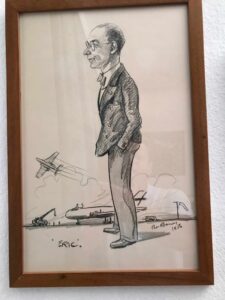
She never worked except in the first years of the emigration when she was a housemaid for families. He was first in the Czech part of the British army, spent some time in India, and then worked for Vickers, a British aircraft firm. He was an engineer and he had gone to a Viennese grammar school where he had acquired most of his engineering skills. He was an engineer in the aeronautical field. My grandmother was clearly not communist, although they didn’t have great arguments about it with my parents. Nor was my maternal grandmother. She was liberated by the Red Army, but that played no role. She wasn’t very political nor very educated. (She was social democratic, but not communist.)
My maternal grandmother’s family had been here for two generations. They spoke Czech as a second language-they had links. Neither my mother nor her brother spoke Czech. I’m not sure whether my grandmother’s brothers spoke Czech.
Session 2, recording two
May 5, 2023
In the first Austrian government, there were communists in the Parliament, even an Austrian communist minister of education. But the communists never made it in any subsequent election. There was hope that this would happen. The party was organized into sections, for different districts. There was one place for meetings in the 4th district, where we lived, occasionally they would have meetings there. I don’t know what was discussed. But I do remember the May Day celebrations, where there were marches through different places in Vienna, towards Parliament. We would gather at the district meeting place, and be given flags and sing certain songs and march and so on. This is a nice memory. They would organize us children; it was a happy thing. There were sausages, etc. There would have been the standard pictures on the wall of Marx and Engels, Lenin and Stalin. There was a communist belief that was passed on to me, and which I defended later in grammar school. It had been passed onto me in an explicit way, but also implicitly.
We went someplace once, on a weekend excursion, when I was small. There was a beggar.
I asked my parents to give him some money. We were not rich in those days, but we had some money. My parents were very negative, the reason they were negative, was of course that poverty is evil, but the way to avoid is by state intervention not by private gifts. I don’t know precisely what they said, but this was my first political lesson. This is still true. Even social democrats now don’t believe that the future of mankind can be solved by private charity. But my parents were not fanatic, so they gave the man some money, to keep me quiet. Maybe this is something that I just happen to remember, but it is typical of how beliefs are passed on.
My parents were not highly educated; my mother of course never went to high school; my father didn’t finish. They were reasonably smart people but not intellectuals spending time thinking about theory. The general mood in Austria those days was strongly anti-communist for very good reasons and the not-so-good reason that that had been part of Nazi propaganda—telling them what would happen if the Russians won the war. And there were rapes and things. These things were discussed at home, but there was denial of persecution in the Soviet Union—although that (position) became more difficult over time.
But coming back to earlier times, in school I learned there was democracy (and there was dictatorship), and in democracies the freedom to vote, and I found that pretty convincing. So I said this to my parents. My father would answer that in a capitalist society, yes, you are free to die of hunger, whereas in a socialist society (a stage before communism, the ultimate paradigm) the state takes care of you. . he would say things like that to me.
This came with decreasing certainty . . . My father from the late 1950’s worked for an insurance firm. He sold policies and so he had customers or people he wanted to turn into customers. He got to know people who weren’t communists. Occasionally those people would visit us at home. That was a time where the books, the Stalin and Lenin books in our library, would be moved to the second row.
This was typical for this whole group. . . In 1956, there was the invasion of Hungary—there were all of these refugees, most didn’t stay. Clearly caused by not a friendly invasion, this was the first blow to the belief that the Soviet Union was a peaceful and well-meaning nation, to the other countries in the Soviet block. Like most of their friends, they swallowed this, but then the final blow, for most of these people, was 11 years later, in 1968, the invasion of Czechoslovakia. That was too much for them. My parents like most of their friends, left the party. But it was also a time by which my father had a good income, and that had changed his outlook. My mother didn’t work at this point. The party was a connecting link. People were still bound together—you might have a hard time leaving the party before 1956, but not in 1968.
In terms of prestige, a general manager of the biggest bank in Austria (his father’s father), was something different from being an insurance agent. Being an agent, you have to be nice to people in order to sell something. When I heard my father speaking on the phone, I disliked this very much. It helped me to know what I did not want to be. When I first saw the play ‘Death of a Salesman’ by Arthur Miller, I saw a piece of my father, I knew that I did not want to be a salesman.
Interest in science. This example of what I did not want to do played some role. My interest in sciences in general just happened, like a flash of insight, maybe similar to religion; it happened when I was 15. This idea that mathematics can be used to describe nature was something wonderful. I knew immediately this was something I wanted to do. I read popular books about the theory of relativity. Relativity is a theory of physics which has elements of mathematical and also some philosophical relationships. Those things interested me immensely. When I was 15 or 16, I said to myself, not only did I want to do physics but also relativity, and this is what I ended up doing.
There is general relativity. The special theory of relativity is a theory of space-time, which replaces classical concepts of physics that had been around since Galileo. It’s a framework more than a theory governing the universe. I didn’t have anyone in those days to talk to about my interests. I happened to have from the 6th form, when I was 15, a new physics teacher. He said a few things that immediately struck me, and from there I went off by myself. We spoke a few times, but I followed up by reading popular books on my own. Today we talk about people being supported and guided, but often with such things–the right person is confronted with new ideas and becomes a self-runner, as one says in German.
I learned from my good students … I never thought that I taught them a lot. Of course I taught them, but this triggered some kind of dynamic in them, and then they ran on their own. One of the wonderful things about science is that there is progress, this is not obvious in the social sciences. There is a famous book by C.P.Snow on the ‘Two Cultures’. The romantics and the scientists. Of course I was on the side of the scientists.
Later at University, that viewpoint was challenged. 1967, that was the time of the student revolution: Berkeley and Paris and Berlin. There was some of it in Vienna. Many children from communist families took part in this, and so did I to some degree. In those days there was some something like a contempt for the sciences in those circles. Maybe also because of Marcuse, who was one of the heroes of this movement. Obviously science can be used for evil and for good things. There is atomic, nuclear weapons in physics. Generally there was contempt for a field that lends itself to any causes whatsoever. And so I also–I knew many of these leftist students–but I didn’t devote a lot of time to political work, I was more interested in the physics and the mathematics.
Session 2, recording 3
Friday, May 5, 2023
I got interested in physics and mathematics at the age of roughly 15. It was clear to me that it was something that I would want to do. I didn’t know whether I was cut out to do this; I hoped I had the talent, but it was certainly something I wanted to do. It was clear that I would study physics. There is a year between completion of high school and the start university, when I had to serve in the Austrian army, which was obligatory in those days. I could talk about those years, but they don’t fit into what we are talking about now. Those 9 months in the Austrian army were useless in terms of what such service were intended to be, governed by silly commands, a waste of time. But this in turn was also useful. After these months, I was hungry for intellectual things. University study is not necessarily all fun, but having missed study for an extended period, I was ready to accept it and try to get over that.
The question was where I would study. Living in Vienna, it was for me obvious that I would study at the Vienna University. Within Austria, people who lived in a city with a university, went to the university in their city. For my parents, it was something remarkable for my father that I would go to university and be supported while I went to University. There were no fees then. My grandparents in England suggested that I try to get into Cambridge. I don’t know how easy that would have been, but that would have meant significant fees, which my parents, my father, were not prepared to pay. Maybe if I had been determined, and this had been a great place for physics, I might have tried, but somehow that was beyond my thinking. The answer is that I did not see any choice.
Also one should mention that the university system in continental Europe is still quite different from the United States, and it was even more different in those days. When one studied at the University of Vienna, in the philosophical faculty, one had a primary and a secondary subject, and the only way to complete it was to do a Phd. You had to go all the way to the PhD.
Now, for some 28-30 years, in all of Europe, with some exceptions there is a BA. In the sciences, nearly all go for the masters. Now the Phd is the exception, for those who will remain in academia. In the biggest firms, at the highest grade, there were also Phds. In those days it was slightly different in the technical universities, where you ended with an engineering degree equivalent to as master and a Phd was the exception, but that also was an extended study of 5+ years. If you became say a physics teacher, you wouldn’t do the Phd, but something else. Nevertheless, in the biggest firms, at the highest grade, there were Phds.
I thought my Phd should be in physics; I thought of physics as superior to mathematics because in physics mathematics is not used for its own sake, but to describe nature and make predictions. Today I would choose to become a mathematician. I think I turned out to be a better mathematician. As a child, I had a fairly good understanding of physics, but then I was exposed to some bad teaching at the University. I then decided on physics—mathematics and physics have made tremendous progress in the past 10 to 15 years—there have been Nobel Prizes in subjects that are fairly close to my interests. But today our everyday life is filled with mathematics, and I find this interesting.
(In the 1960’s) there was some kind of standard curriculum in physics, which has been streamlined. One had to study mathematics and also do some lab work, the latter of which I disliked and was not very good at.
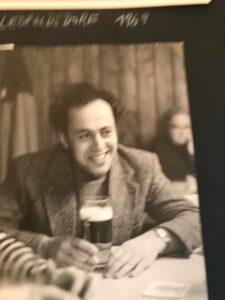
I spent my whole professional life in universities, mostly at Vienna University. There is this general admiration in academia of professors, but I was never really affected. I was never very proud of being a member of the University, nor did I have a great respect for many of the professors. I rather judged them—at first I just listened to things, and then I tried to do things myself. Then one compares oneself. . the longer I did this, the more I judged them by their work and less by their statements and presentation. (I was not always impressed by their work.)
Universities at the time were very old fashioned, there was the figure of the professor, who was important by virtue of presenting certain courses—just being himself–and this is not possible now. Some people in the system never had any doubt that they should be anything else. But I didn’t come from this kind of family, and I always asked myself if I was good enough.
Study at an Austrian or German universities in those days was a very individual thing, very different from a US undergraduate study in those days, which was more similar to the last two years of an Austrian high school. Here there was a big gap between high school and university. There was a core curriculum, and then one was left to one’s own devices. In principle you could have gone for a Phd in 4 or 5 years, but very few actually did. Basically you approached an institute or a person and asked him or her to propose a topic for your Phd.
My natural anchor was the Institute for Theoretical Physics. There was a test, after 4-5 years, to determine if you were suitable for the Phd.; that was quite a barrier. You spent those years doing course work, (and only then did you take this test.) You were more or less expected to discover by yourself if this was suitable for you. Of course there were exams along the way. And then there was this one exam, which was for permission to do a degree in theoretical physics. You had to solve exercises, all in a field that wasn’t really my field of interest.
My doctor father (mentor), shortly after having given me my PhD topic, left the field, so then again I was completely on my own. Of course you write it up and present it , and then you have to pass, but it took me more than two years to do this. He gave me a problem which had arisen from a conversation of his with Richard Feynman in the United States, one of the great masters of theoretical physics. So he passed this idea on to me, but he gave me no tools to approach it. It was just a thought. So I had to slightly change the topic into something feasible, and I did this on my own. I had desk in a room, which still exists, the Schrödinger room. Schrödinger had been the last Austrian Nobel prize winner in physics, until Anton Zeilinger in 2022. There was a room bearing his name. This belonged to the library—there were all these books. I was sitting there with nothing to do, so I took one of those volumes, and found articles, by people related to Einstein, articles that were loosely related to my Phd. From them, I found something that I could do and moved forward.
Session 3, recording 1
Friday, May 12, 2023
Maybe we could come back to as early as my school years. Clearly I stuck out somehow from my schoolmates, more because of my political background than from my Jewish background.
That turned out to be an important lesson for me—I shared the views of my parents, although I already then found some things hard to believe. This was Austria in the late 50’s and early 60’s. Communism was badly viewed–the Iron Curtain, the Hungarian revolution. People were afraid of the Soviets, but I followed my parents and defended them in discussions in places. . . To me in retrospect, of course, the viewpoint of the teachers and other pupils were right. I was wrong. Still, it was good to learn to speak up for one’s opinion. On the other hand, trying to be courageous in the sense of defending a minority opinion, does not mean that one was right.
The Social Democrats, in the very old days, had had a strong Marxist background. This was an argument by the conservatives against them in elections. This was posed as a threat. They couldn’t shake this off. Finally Kreisky managed to do this —he came from a bourgeois background. Claiming that the social democrats were communists didn’t any longer work.
Austria as always had a center-right majority, most of whom are Catholics. In the Nazi period ties with the Catholic church were weakened. After the war many became super catholic again. That was one of several reasons the atmosphere after the war was both politically and culturally very conservative.
Coming back to myself. Being in a minority position does not make you right. I spent 9 months in the Austrian army for my military experience. By that time I had turned into a pacifist–which is not really what communists are—again I was in a minority situation. It turns out I registered for 12 months, instead of 9 months, because my father had a customer who advised that I would be better off so I could do something more—I was somehow in a section of the army that was more elite (i.e. people with a high school degree).
At some stage we were required to write an essay about Austria’s military defense, over Christmas at home. Of course they wanted us to express the official view. I decided to write an essay expressing my own (pacifist) view. In fact, I wrote Austria should be completely disarmed. What then happened I had discussions with officers. To them I was dangerous. After these many years, my viewpoint has changed completely. Now I live in a society where young people don’t have to do this military service, they can do social service. Now I believe that Austria needs a strong army, at least within Europe. So it seems to be that my opinions are always in the wrong place or at the wrong time.
The apparently naïve points of view, of which my superiors in the army wanted to persuade us: e.g. there being a natural right to defend oneself (‘Imagine if you are together with your girlfriend and someone attacks her what do you do?’). Now I actually believe these views are justified (think of Ukraine).
First of all, as far as my family was concerned, Austria was part of their political creed. They considered themselves Austrian patriots, like the resistance fighters. There is one brand of Austrian patriotism, that is related to the foundation of postwar Austria by people who had been in the camps or the resistance. This is the framework for people like my parents. But the widespread view is that there was not much patriotism before Kreisky. Much of this patriotism consists of not being German—this is at least 50% of it. ‘Germans have no humor. They are more bellicose than us; they have a sense of order that is too much.
As for myself I consider myself an Austrian patriot. Some people, with a background similar to mine, are much more critical of Austria than I. But under different circumstances I might have turned out differently—I might have been a proud Englishman.
Kreisky opened Austria to the world. He welcomed Arafat. Abortion became legal in the Kreisky years. Louise is from a more conservative background—she may have voted for him once because of abortion, but she is strongly opposed to a policy of excessive government spending which started under Kreisky.
I started out as a leftist, but I ended up as something more of a conservative. There is no conservative party in the good sense. Not really the OEVP, but I voted for them on certain occasions, even when I knew they would make a coalition with the Freedom Party, which is impossible for me to vote for directly.
From its origins the Freedom Party is a Nazi party—it is a right wing populist party, attractive to people who don’t want to try hard. They are happy to have social security but they are jealous of other people. They ended up fishing in the same pool as the Social Democrats.
I am in principle willing to vote for any party—other than the Freedom Party. But I became dissatisfied with the leftists, which is why I vote for the conservatives. But calling myself a conservative is too much. The left as I see it has turned hypocritical, a better term is dishonest.
I agree with our general social democratic structure. There is a general consensus about this.
There are some things in left wing ideology which are not common sense. Things are never your fault, they are the fault of society.
The Freedom Party is not opposed to a policy of strong government intervention in the economy. This fact is often ignored. National Socialism was also socialism of some kind. One of the big scandals was when Haider was governor of Carinthia. He was accused of Nazi sympathies. At some point he said the Nazis had had a good employment policy. This caused an uproar, and this caused his resignation as governor. But this had some truth. They built up the army and they stole from the Jews, but they had some kind of social democratic policy. There are connections and similarities between the outer left and the outer right.
Session 4, recording 1
February 5, 2024.
Larry: Bobby and I had three previous conversations and we are having our last conversation for this purpose today. We would like to talk with Bobby about his career and his life as a father of two children. We are also sitting in Bobby’s apartment eating wonderful cake made by Louise and having coffee—I’m in something better than a Vienna coffee house because Louise’s cake is better than in most coffee houses. Let’s talk about your professional post-doctoral career and how you ended up teaching and the kind of work you did as a scientist.
I studied at Vienna University, which ended in 1974; a year later I married, a catholic woman, Elizabeth, whom I had met in the midst of the leftist students movement. She was part of that; I was part of that naturally because of my background; in Vienna it was not as big as its German analog. Many of the people participating were like myself, people from a leftist or even communist family background—so many were Jewish youngsters from a communist background. My wife is from a Catholic background in Styria, so her family was by no means leftist.
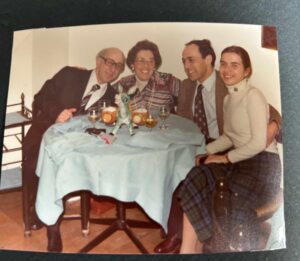
But as to the professional thing, I remained at Vienna University. I got what would be called in the United States an assistant professorship; I continued what I had been doing in my Phd plus some teaching. It was then called Universitätsassistent. I must say I sometimes feel a bit to my shame that most of my career was at Vienna University. In that sense most of my career was quite linear. Physics and mathematical physics are of course highly international disciplines—I had extended stays at Oxford and Cambridge and in the US, for reasons of research or scientific collaboration or giving lectures, but except for a whole year at Oxford, I was always based in Vienna. In terms of the subject on which I worked, I was educated as a physicist, but there is of course, the way that mathematics is being used, there is a whole spectrum of possibilities. At Oxford in 1977 I was at the department of astrophysics. My field in physics gravity and relativity has a close relationship to these things. But I disliked getting more physical and close to observations, so I became more mathematical.
Physics is the study of the basic laws of nature. This concerns all non-living things, but in principle also organic things, if one is as I am, a reductionist, then practically everything, including living things and the brain, all come down to physics in the end, even if carrying that out is a project for the future. The phenomenon of conscience for example is a problem for biologists and philosophers, but for us it comes down to physics. What makes it physics is the way these laws are described, namely that they are described in the language of mathematics. Physics finds these laws and making predictions from them, and comparing with observation. There is a spectrum, how mathematical one wants to get. My field is general relativity, this is very mathematical, and it has turned out, particularly in recent decades, that predictions made on purely mathematical analysis have been vindicated by experiments. The primary example of this is black holes, which are mathematical predictions, there is now huge experimental evidence of their existence. I ended up being a bit more of a mathematician than a physicist.
The movement of the planets, where physics started by Galileo and Newton, radiation, etc., all studied by astronomers and astrophysicists—this is not what I’m really good at. I like to concentrate on small things. Within mathematics, one has some clear assumptions, one starts with everything on a piece of paper, focusing on a problem.
Of course for reasons I’ve just mentioned, it’s not something that is very closely related to experiment, but the first real problem I tackled, 2-3 years after my Phd was something like the following. If you think of a heavy body like the earth, and it’s gravitational field, and you look at it from a large distance, it is rotationally symmetric. As you move closer, you see more details of the shape of this body, and you look at it order by order, with more structure. There is a way to describe this field by certain quantities, called multipole moments. There are more of them as you move closer. There was a question as to whether these multipole moments allow you to reconstruct the gravitational field that these moments create. Together with a younger colleague, I was able to solve this problem. This was one of my first successes.
Astrophysics is its own discipline, derived from a number of theories, but too complex to be mathematically rigorous.
I work from problem to problem. In most cases, it was a logical thing. I moved from one to the next. Every solution gives rise to new questions. Of course there were changes. One relatively drastic change, happened in about 2000, exactly the time of the breakup of my marriage ( I married in 1975.) I worked with Bernd Schmidt, with whom I had already collaborated before. He was German. He proposed to me the field of continuum mechanics, bodies have elastic properties, they are not merely points. He posed this issue to me. That for me was a wonderful experience, personally and as a scientist. When my marriage broke up, since it was I who had left, I had a bad conscience, and everyone had known me as a family man. I was worried about retrieving my humanity, and it helped to have friends who still thought of you as a friend, even under changed circumstances. I had to some degree to recreate myself. This new subject was very different from what I had been doing before. I had always been concerned with the vacuum. There can be gravitational fields without bodies. In principle, the world could exist without bodies, but lots of interesting things could still be going on. For example a gravitational wave: In principle to understand these things, you can imagine them as something, not created by matter, but freely propagating in space. We know that the universe started in a big bang. There can, in principle, be different kinds of radiation, that were there from the beginning. There is a class of differential equations that describe waves, a wave of particles, or electromagnetic waves, without particles, just waves in vacuum. A lot of things can be done in my field by ignoring matter. It was a big change for me, in 2000, to now start to think about matter. The theory I worked on with Bernd, was elasticity, elastic bodies. We started developing tools. This was my main interest for 20 years, a bit less since Bernd died a year ago. We worked on this together for almost 25 years. He had been a scientist at an astrophysics institute in southern Germany, then in Potsdam, and then lived his last years in Munich.
This is not the highest profile field. It is a bit of a fringe subject, but I think it was a success. I think we were able to do things that have some lasting value. That has been my main focus, trying to produce some things that have usefulness over time.
Session 4, recording 2
February 25, 2024
Bobby was telling me about the re-orientation of his work after he began working with his colleague Bernd.
I want to spend a few minutes talking about friendship as I experienced it in connection with scientific collaboration. I have always had very few friends, almost all of them were colleagues. Not all of them; Larry is a recent acquisition as a friend. Science of course is not only collaborative, it is also competitive. There can be friendship but also enormous competition and hate. There are fields where people are so eager for success that they might even steal their colleagues ideas. In my field I was lucky that this rarely happened. I had situations like that, but mostly I found there was friendly collaboration and a positive attitude towards what other people are doing. In a collaboration one is interested together in solving some scientific problem, and there is the personal side. One is invited to dinner and gets to know each other’s family. But mostly one does not talk too much about those things. Nonetheless this is a way to get to know each other very well, maybe even better than from discussing one’s private life.
When you work on a problem, there are several things that you have to learn, for example.
The two people are not good at the same things. There are things where I can rely on the other person more than on myself, and the converse. For that reason every collaboration is different because of the different capabilities. Also there are emotions which are not reflected in the end product but which play a role in pursuing the subject. Most of the people with whom I collaborated, I think I knew them very well, and they knew me very well.
It had been a deficiency in my marriage that we had very few friends whom we would meet on a regular basis. So there was much focus inwards rather than outwards. For example, when I left the maternal (marital) apartment, I stayed in my mother’s place for a few weeks. For many weeks I received no phone calls, after we split up. Of course I had meetings with my children and things to discuss with my ex-wife, but there was no one around to miss me. But this was made up for in my professional life.
In the previous recording I mentioned a change of field in connection with the breakup of my marriage. Bernd suggested the topic. Of course there would have been many things in a different setting—people might have asked what happened or how I was feeling. But this was not done. What Bernd gave me was something to work on. In addition to this area having been of interest to him for a long time, he knew exactly what was needed for me. The other thing; it was good; they (Bernd and his wife) had known my family and my wife, and they welcomed Louise. They had in those days a wonderful house in Werder near Potsdam, and we visited them. I spent extended periods at the Max-Planck institute there working on this new project. Louise who was still married in those days was here (in Vienna). They did not have initial reservations; they could have viewed her as the culprit. They didn’t, and that was something wonderful that they did for me and for us, I might say.
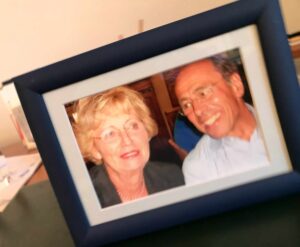
Maybe this is neither here nor there, there is something funny about the breakup of a marriage in my experience, which is just an observation that I find interesting: how this is viewed by people outside. It is a bit as if marriage is an important institution in bourgeois life. When a marriage breaks up, when people think of it has having been a happy marriage, it’s as if the universe holds its breath for a moment. Of course there are women, wives of friends, who get worried, who might find that I might be an example for their husbands, so they tend to be a bit skeptical, but also men suddenly say things about their own life which they hadn’t said before and a few weeks later they wouldn’t repeat. It’s a bit like a moment of truth, happily forgotten.
Session 4, recording 3
My children.
My son’s wife has two practically-grown children whom my son thinks of as his step children. My daughter has a girl and a boy. Maybe I could start out by saying something in principle about the experience of birth, from my personal perspective. I always wanted to have children, so I did. The advent of a child was something I experienced in a special way, although I received no religious education. The experience of a child being born—the idea of the Messiah is something which I can relate to in connection with the birth of a child. In the Christian tradition, this is also very clear and strangely as it may sound, it has some connection with science. Science goes on and on, knowledge and open problems are also passed on. When a child is born, one doesn’t know what it will be, it’s specific strengths and weaknesses. Being born as a human being, the life of this little human being; it will be tested by life, but it’s also that the world is to some degree tested by the new child. The child can look at the world in a new way, in different unforeseen ways, I mean I’m not necessarily thinking about saving the world, but it could make contributions to mankind, and it could solve problems, and it will be critical of the world. Particularly young people are always critical about society and their parents. All these are a test on both sides, so in a scientific experiment, something similar takes place.
This is a feeling I had when my children were born, particularly when my son was born, this was my first experience. People told me, at the time that my children were born, that I appeared them somehow different, elated. I didn’t notice myself, but if that was the case, it was due to feelings like that. This is why I think it important to have children, it is important to one’s growth as a human being. Of course there is again in the world of science something similar in dealing with the next generation, with younger colleagues, collaborating with them or seeing the progress they make has been part of the joy in professional life.
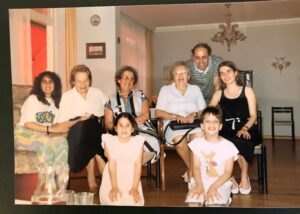
As far as my own children are concerned . . . when I try to describe them, the first thing is that they are very different from one another. With a background such as mine, knowing what happened during the Holocaust, I sometimes looked at my children and imagined (sick) that something might happen to them. (Larry interjects: You’re not the only one who was raised that way.) I imagined, supposed, the most terrible thought that they would be deported somewhere. What would happen and how would they react? This is a terrible thought experiment but it says how I see the differences between them.

(Note added: I should rather say the following is how I thought of their difference when they were little – perhaps not when I think of them as the adult persons they are now.)
If this happened to my son, he would pretend to be dead, to somehow find his way or be forgotten. He would have worse chances to escape in an early stage, but if things get worse and worse, because of his way of somehow pretending to be dead he might be overlooked, but stand a good chance of surviving. My daughter would behave differently–she would create hell to people, maybe they would let her run way, just to get rid of her. Maybe if that didn’t work, she would have a worse chance than he to survive. So this is how I saw the difference between my children. It’s a sick picture; it is something which . . . (Larry: you are describing their personalities in the context of your fear.)
Bobby written notes after the interview:
Despite their differences in temperament and sometimes different opinions, there are things my children have in common. They are both very intelligent. Equally important: they have independent yet open minds. Families with a Jewish-leftist backgrounds tend to have children – if they have any – echoing their parents’ beliefs. They would typically vote for the Greens and be critical of all forms of patriotism, in particular concerning Austria. My children, on the contrary have ‘come a long way’ from where I – and to some degree their mother – stood when I was young. They know of course where they come from. The present document is an attempt to make sure this extends to my grandchildren.
Session 5, new recording
May 26, 2024
This is Larry Sicular sitting in my apartment in Vienna talking with my friend Bobby Beig.
We are now going to record a last session of his oral history and today’s session is about his family life.
So, Bobby, we talked about your work, so perhaps you can talk a bit about what you did outside of work.
So well, I must say, I was never a person, although my work was certainly of great interest to me, and I worked a lot at home on and off, my family also meant a lot to me too, particularly in the growing up of my children. Also we had colleagues over for dinner, and either they (the children) would listen quietly or take part in the conversation, and what was important to me always was their intellectual development. I wasn’t so aware of that at the time. Now that I’m seeing my granddaughter and also my grandson and watching them grow up and listening to the things they say, I am much more aware of this, how interesting it is, what goes on in a child’s mind, and how it expresses it in words. That is another thing, that concerns my own development. I never did well at German, but language means a lot to me, even in a scientific context. Perhaps this will change with AI, but mathematics, as it has been done for centuries, requires language. I care about language, about clarity in language, and it is something one sees very rarely, and I certainly hoped my children would grow up as persons who try to think hard about certain things and try to express them in a clear fashion. And that was the most important thing to me. And I must say, despite their differences, it is something that has worked out wonderfully. So they are different in many ways. My son is more gentle in some ways, more understanding. My daughter can be quite tough, but they both know what it takes to form an opinion and express it in a clear fashion. In writing a text, on politics, science, it is hard to say something both clear and correct. There are very few ways to say something that is right, correct and relevant. To be aware of that is very important. And it is something that I have seen both my children being very good at, in different ways.
My son now has for most of his life worked as a journalist, so he has to write about things. When I read things he writes, not always, many times I agree with him, and I also like his style of writing, the way he does write. This despite the fact that in his political creed he moved—well I did move to the right too—but he more so than I. But it never goes to the point that he writes in a fanatic or irrational way. So, yes, he also has a musical talent. He wrote music; he has training as a composer. What I have seen when he grew up, was a certain talent that might have cut him out for being a film director, or at least a composer of film music, which didn’t happen for several reasons—Austria is not the right place for such a career—but it is something that I hope. He has written pieces of music, waltzes; he wrote during the lockdown. Nothing career wise came out of this, but maybe that could still happen when at some point he retires from his job. My daughter is a lawyer, but she spent several years at university, not just for the study. She has written original papers on legal issues which entered books and things and in one case (was) cited by the Supreme Court. Her training as a lawyer isn’t quite complete yet due to interruptions, such as the children and so on. But she’s as a lawyer not just a standard lawyer, so she can in principle deal with difficult cases, WITH things that are not a routine job, but which require somebody who understands things from scratch, so to speak, and she is able to do that. She is fast (at) understanding things and she is able to function under pressure. So I think about strengths in my children and things which I respect and which give me a sense of pride, also because I think that it has to do with them, but also a little bit with the way they grew up.
How did you and your wife manage things so that they learned these skills?
You don’t learn this, even in science. The most important things are not the lines but what is between the lines, so for example, one has a discussion about any issue, and then listens to another person. And then this awareness when a point comes, perhaps a hidden assumption that you have to point out. So it is this kind of awareness which requires intelligence and growing up in an environment where this is valued. I think children don’t learn these things directly, but they acquire a sense that this is important, and more importantly they find that they are good at it, and then of course, they further develop it.

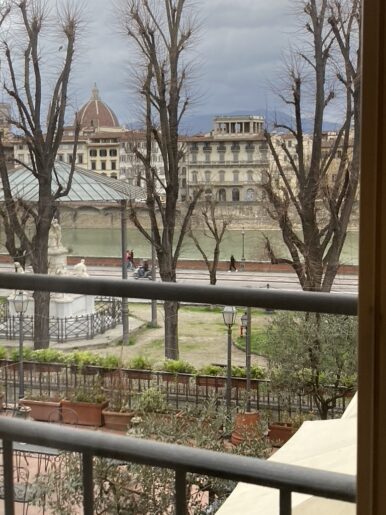
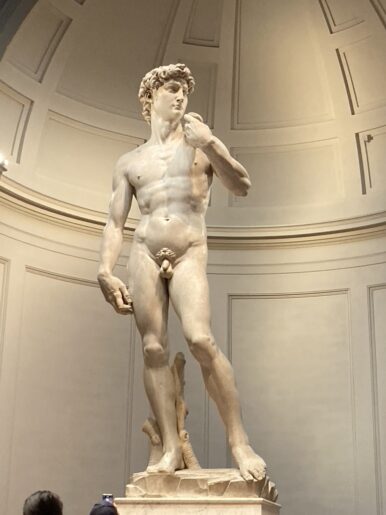
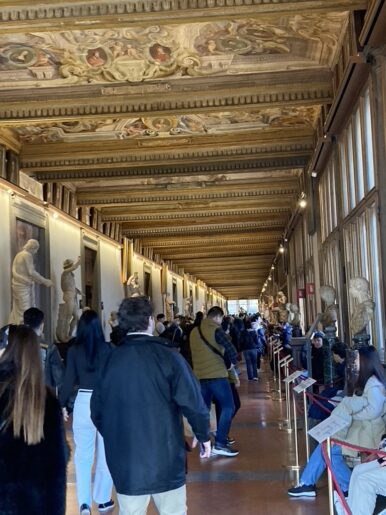
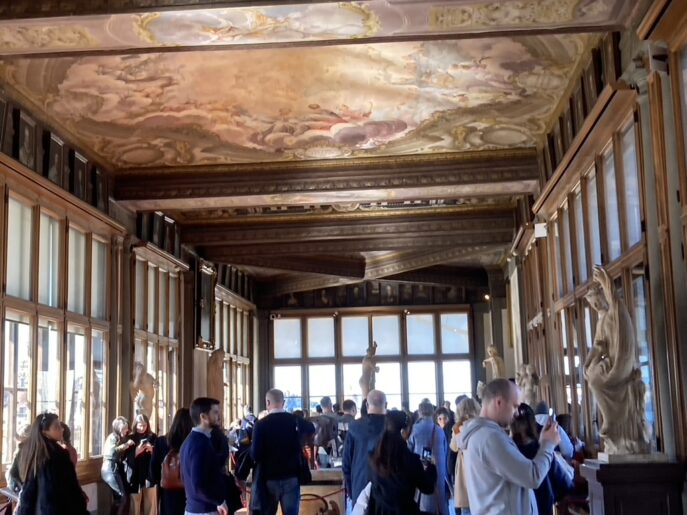

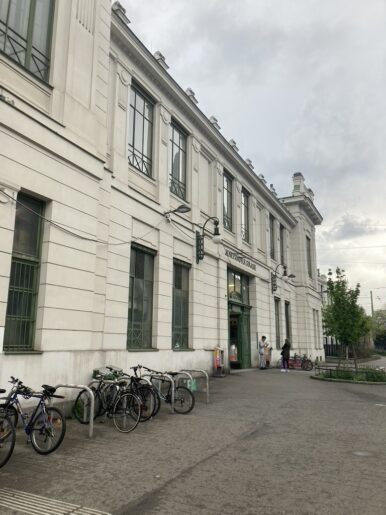
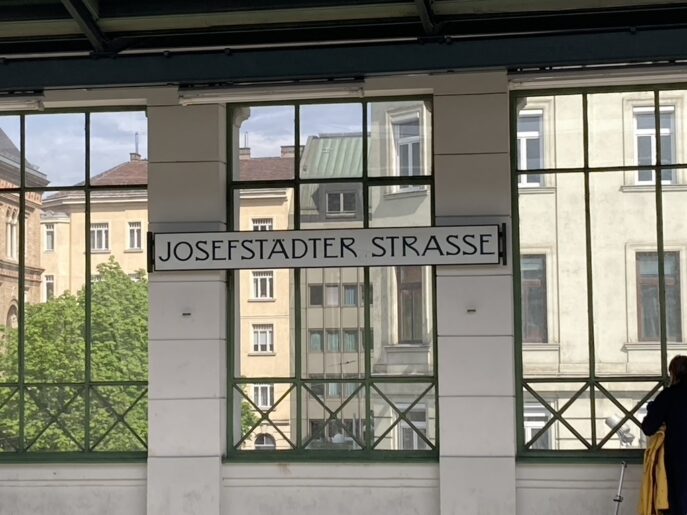
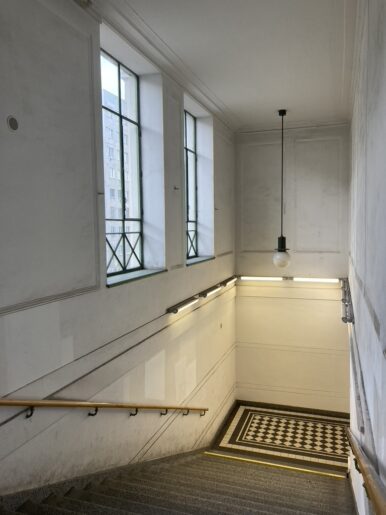
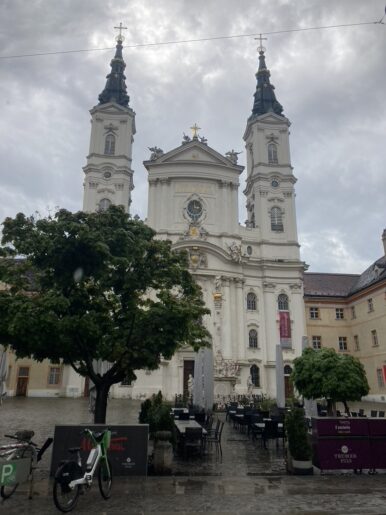
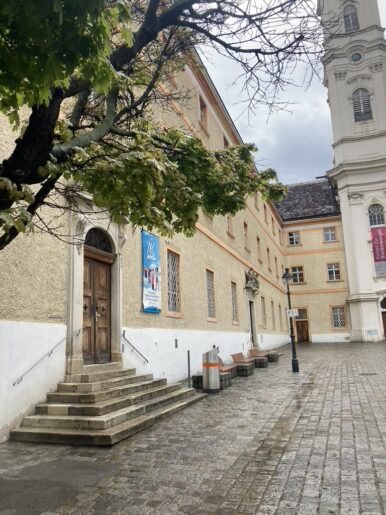
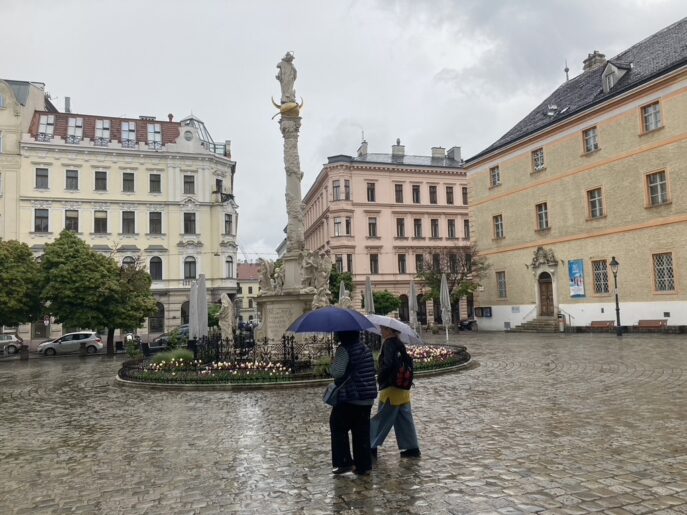
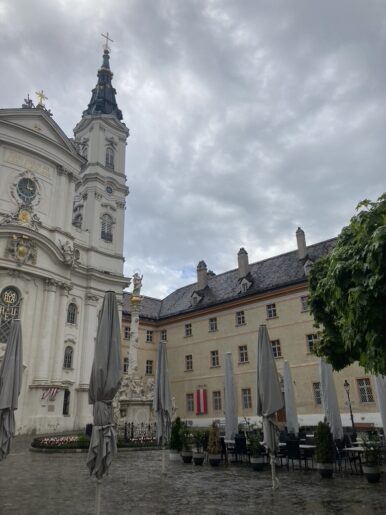
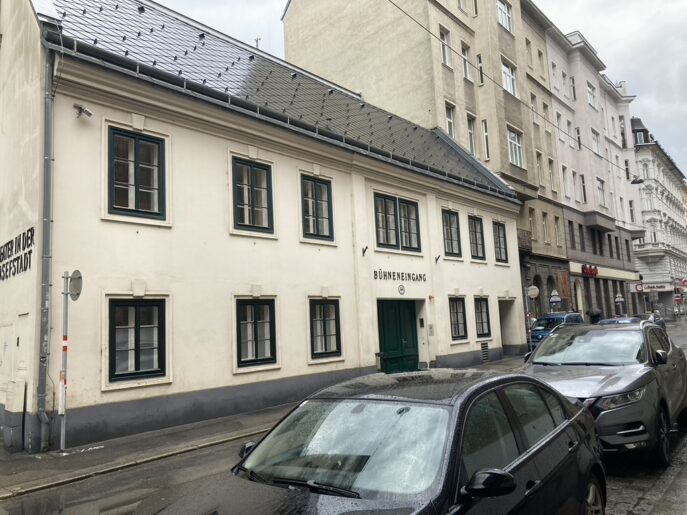
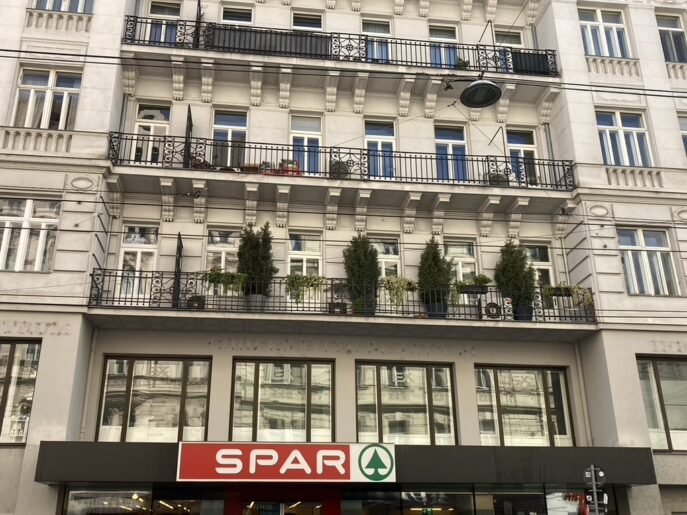
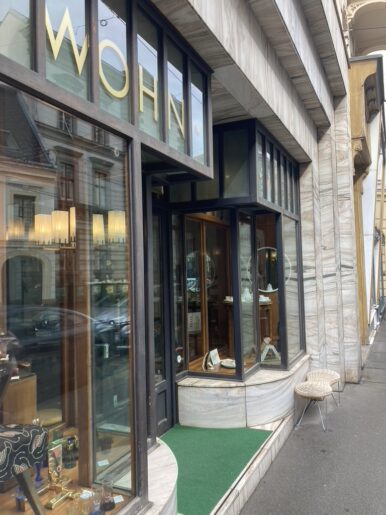
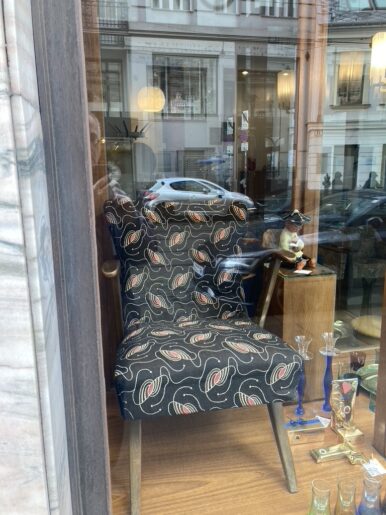
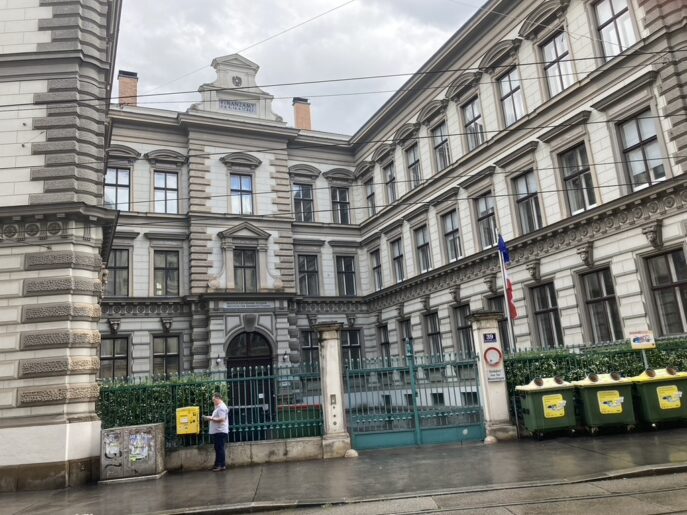
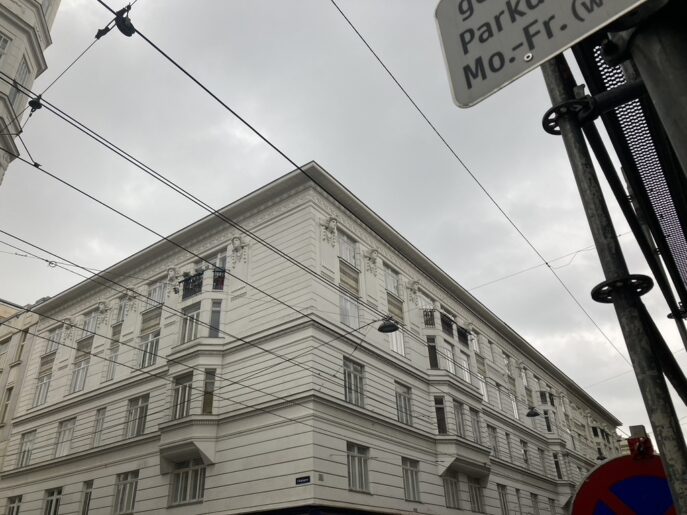

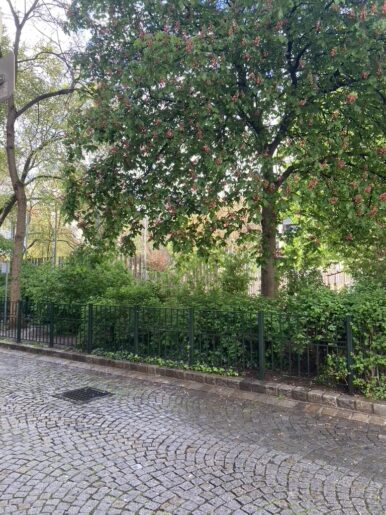

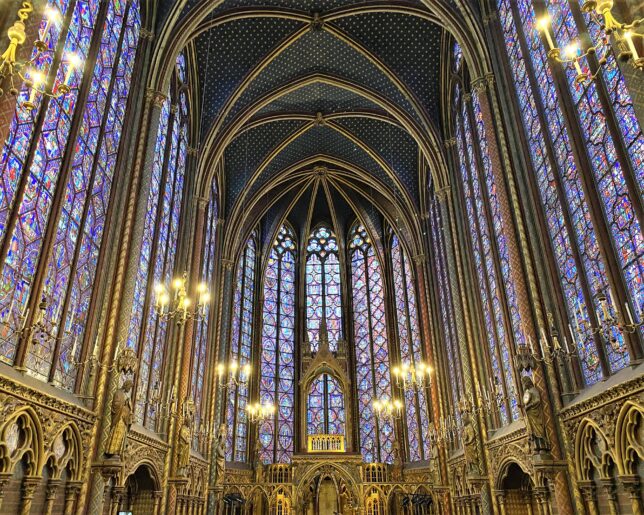
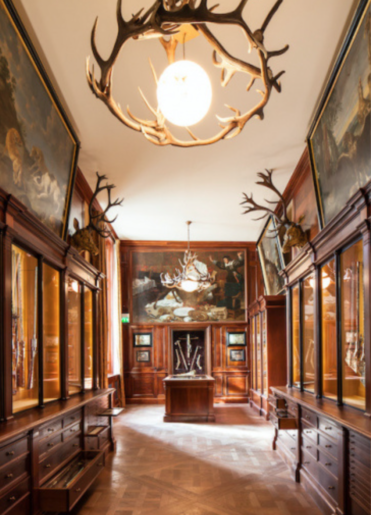
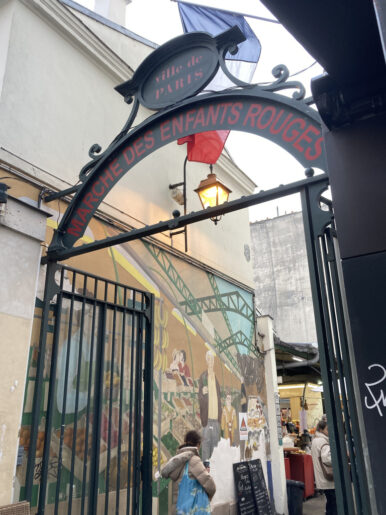
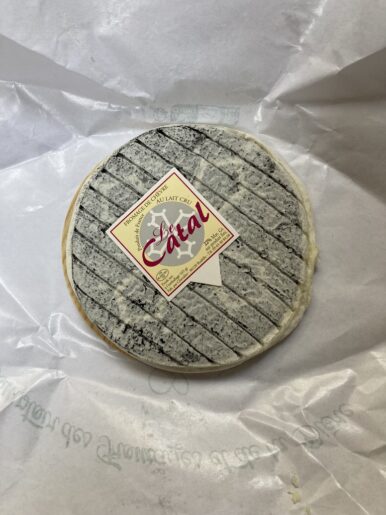
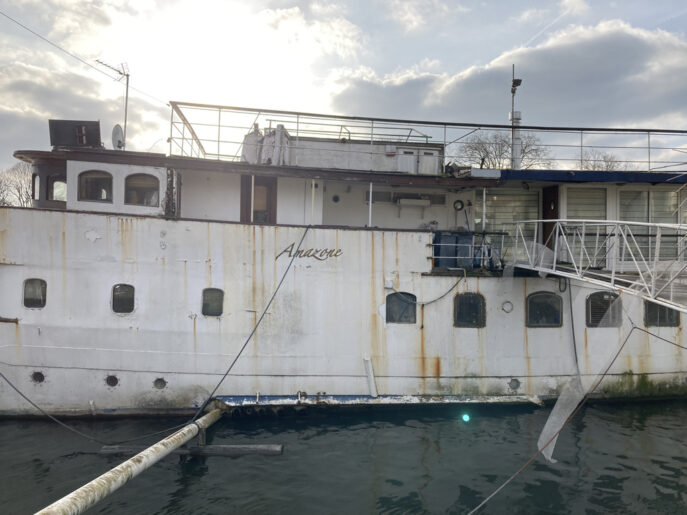
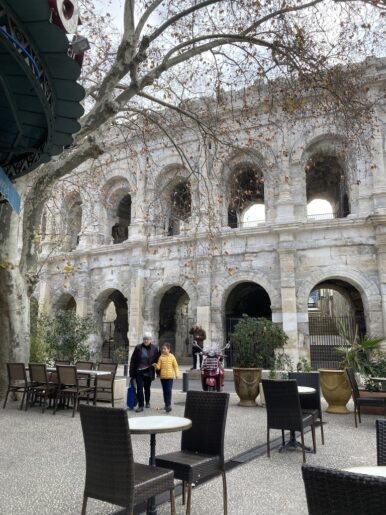
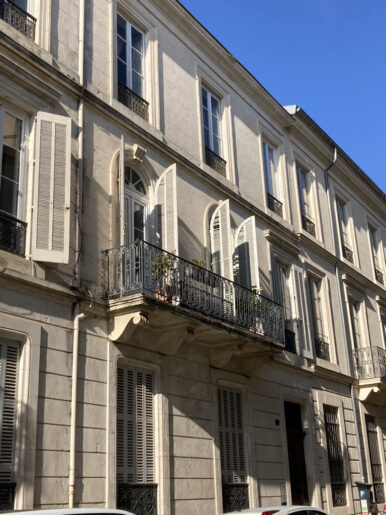
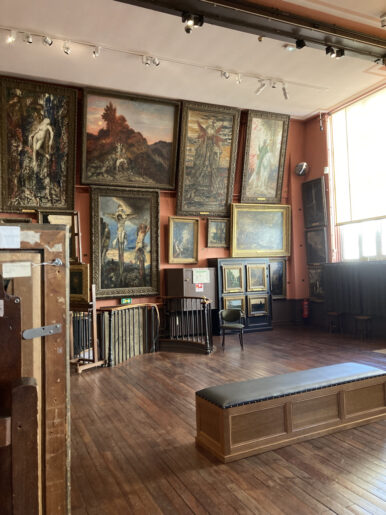
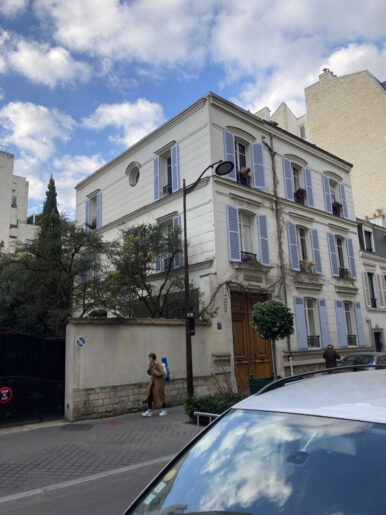
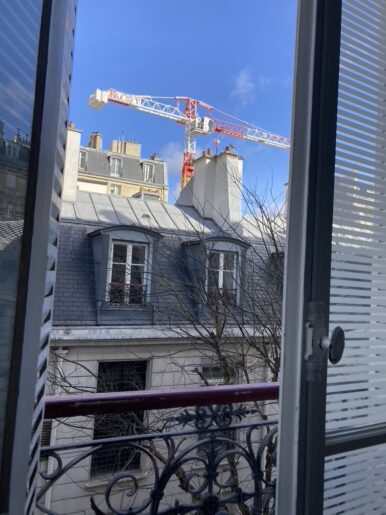
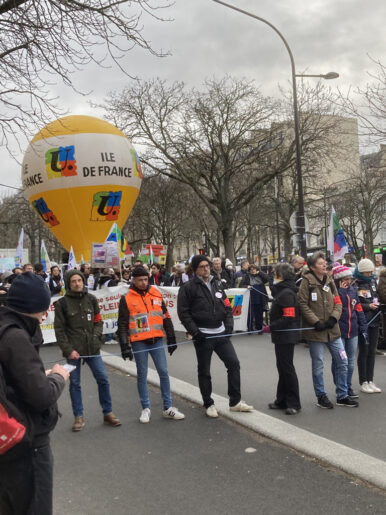
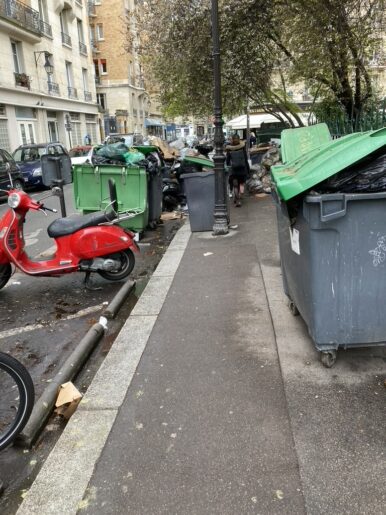
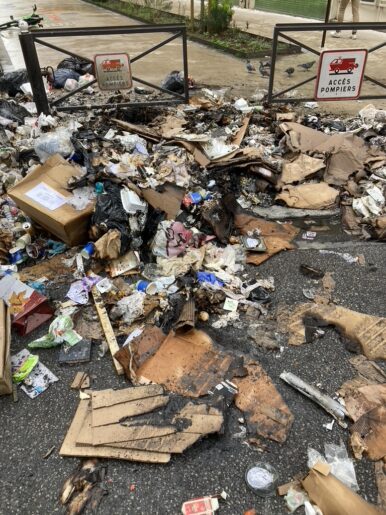
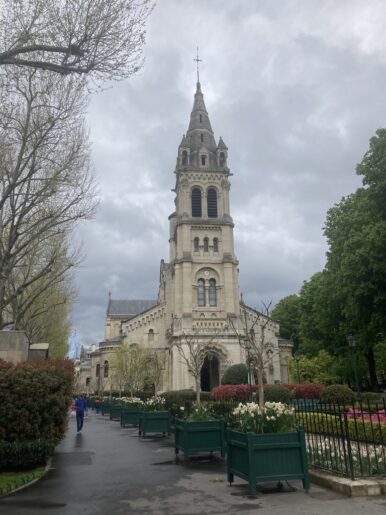


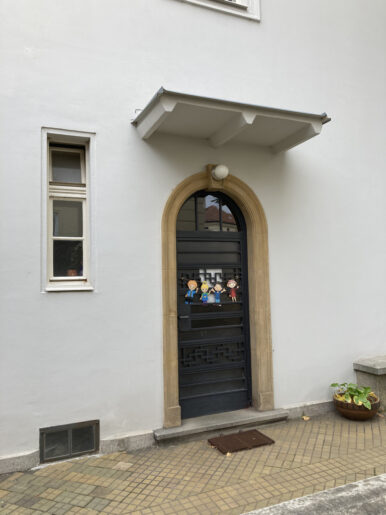
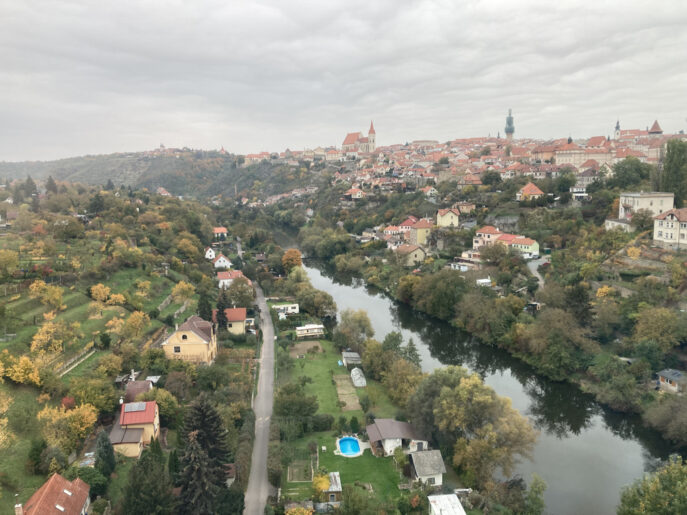
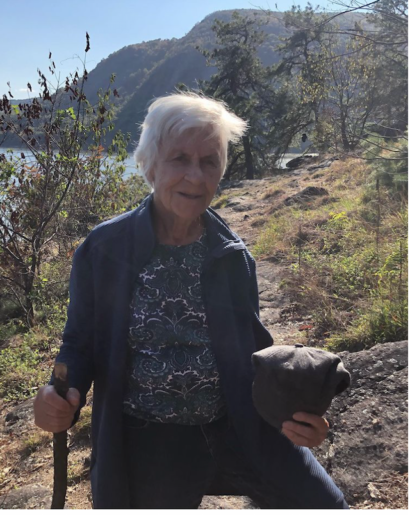
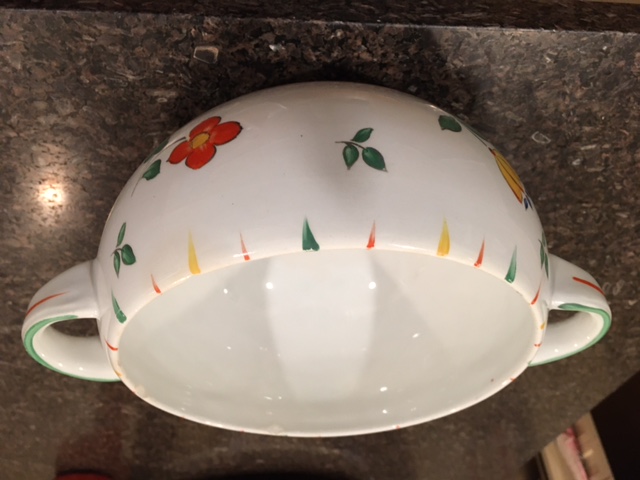
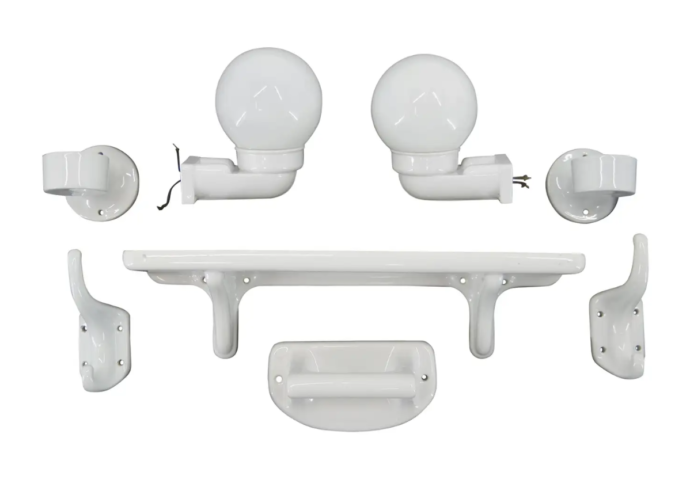
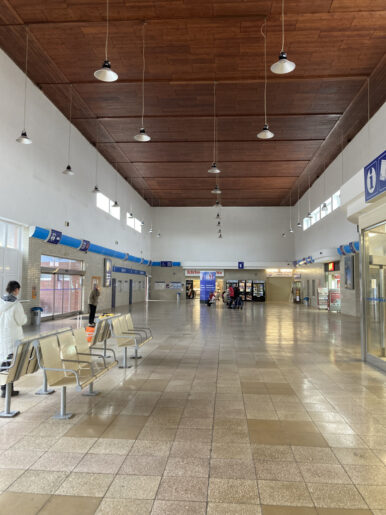
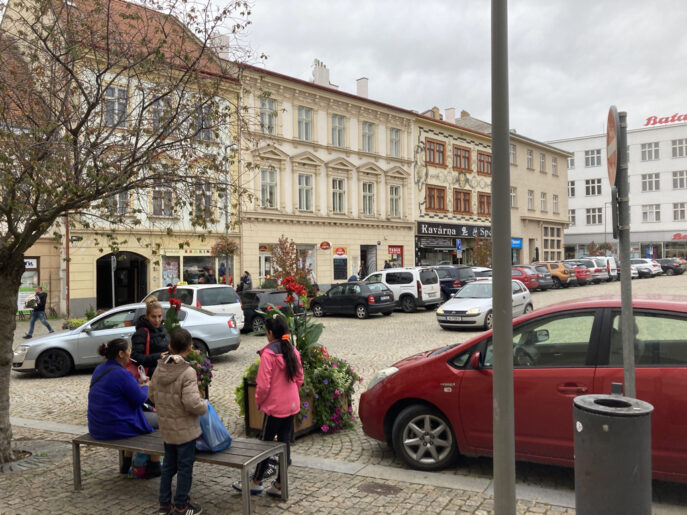
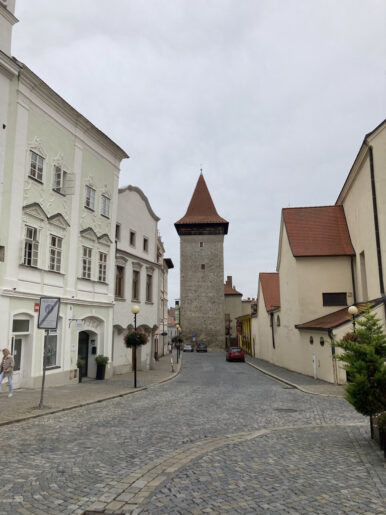
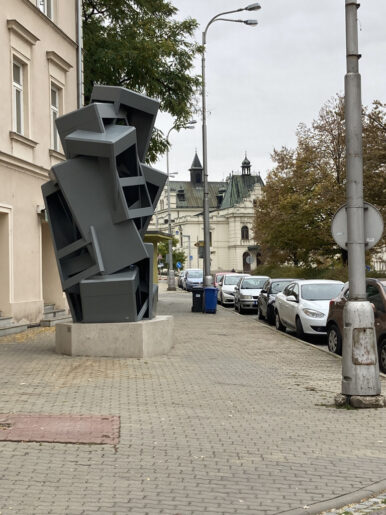
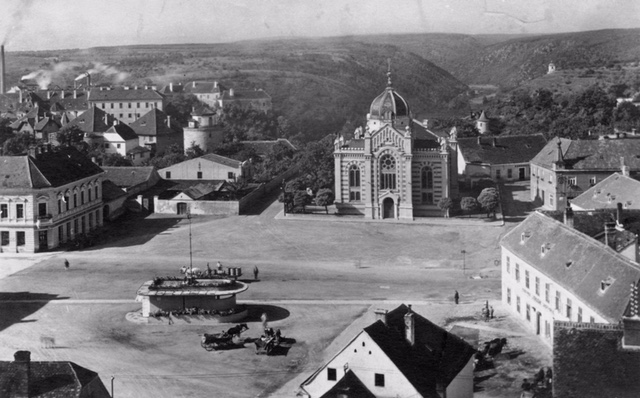
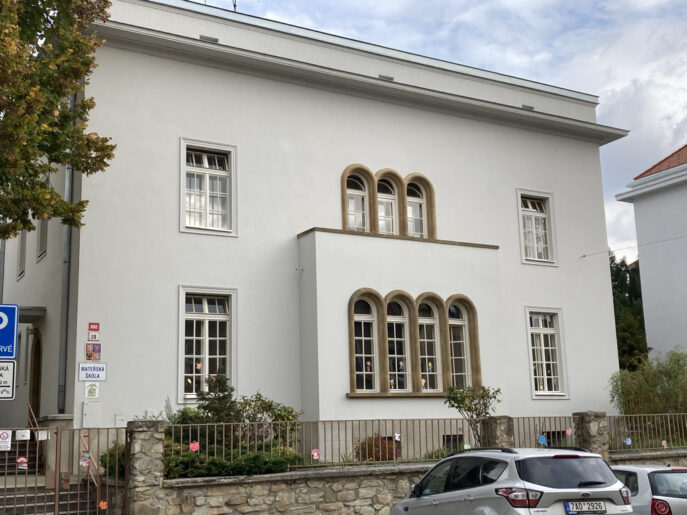
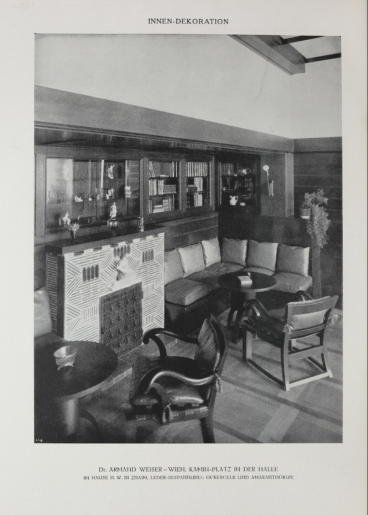
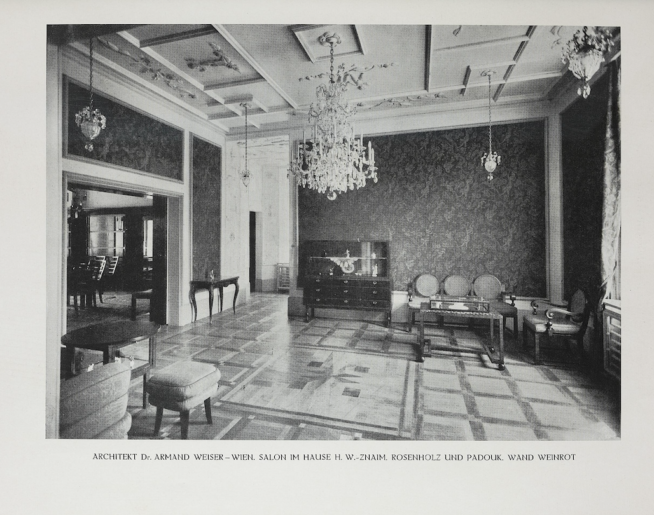
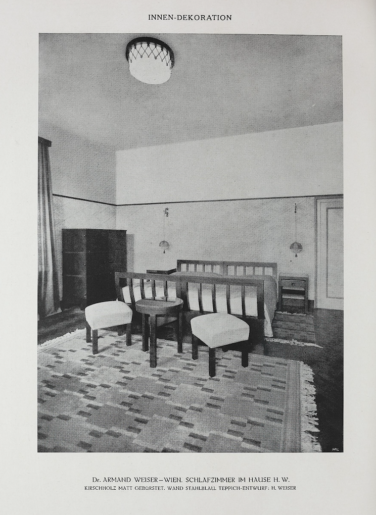
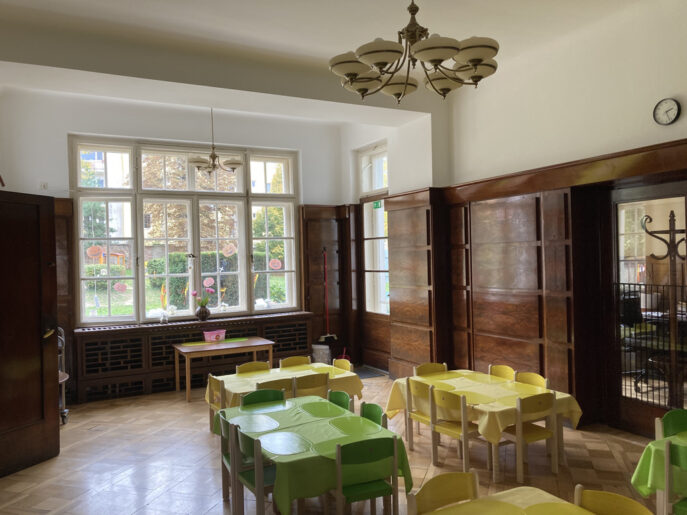
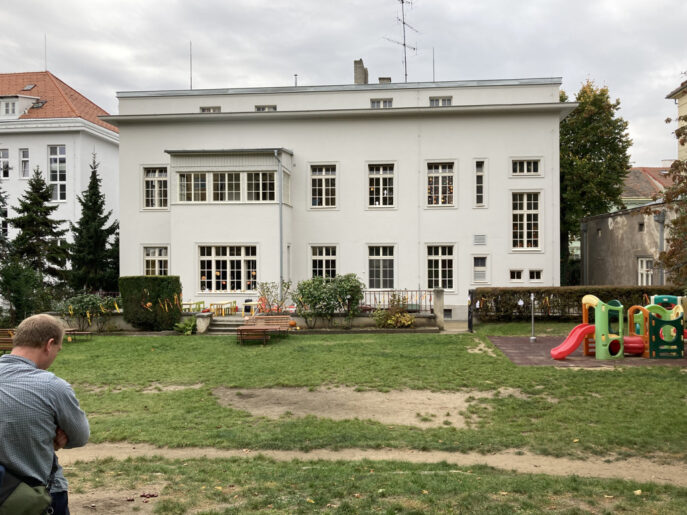
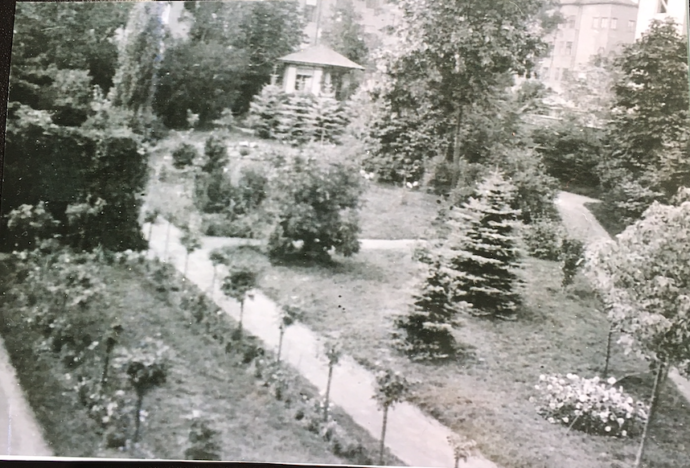
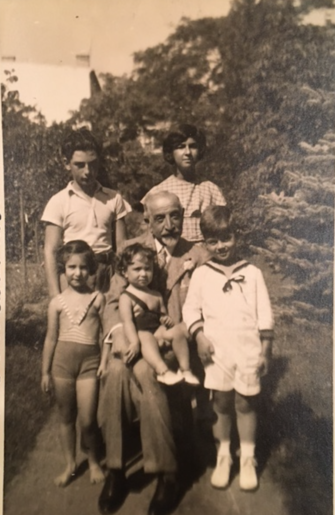
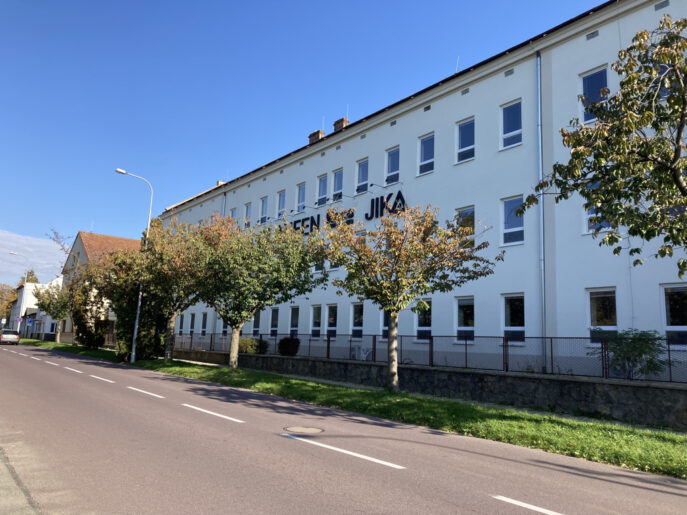
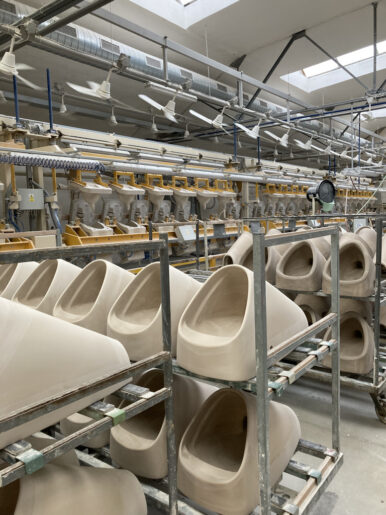
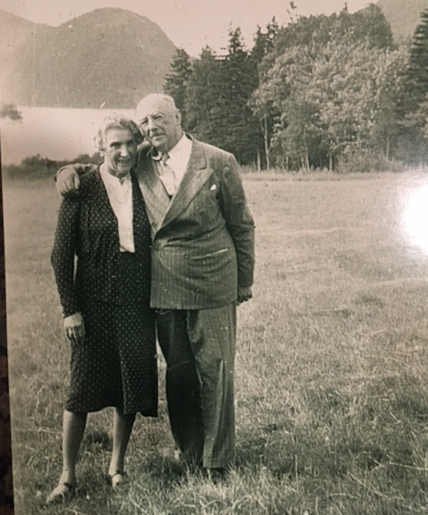
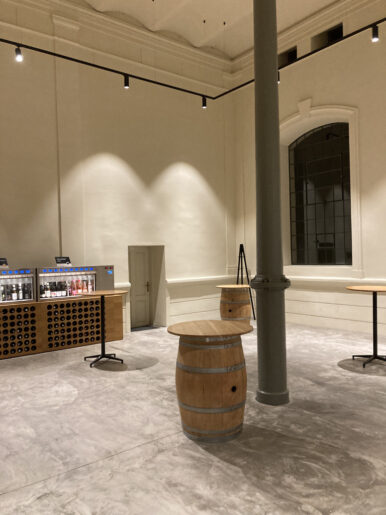
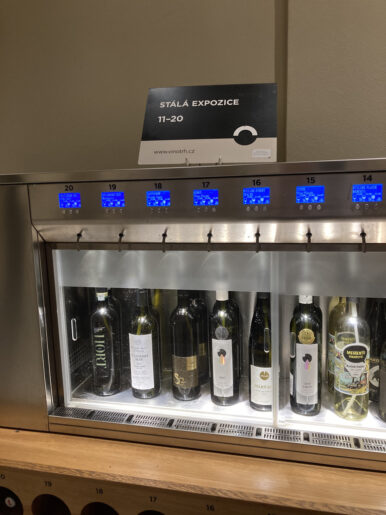
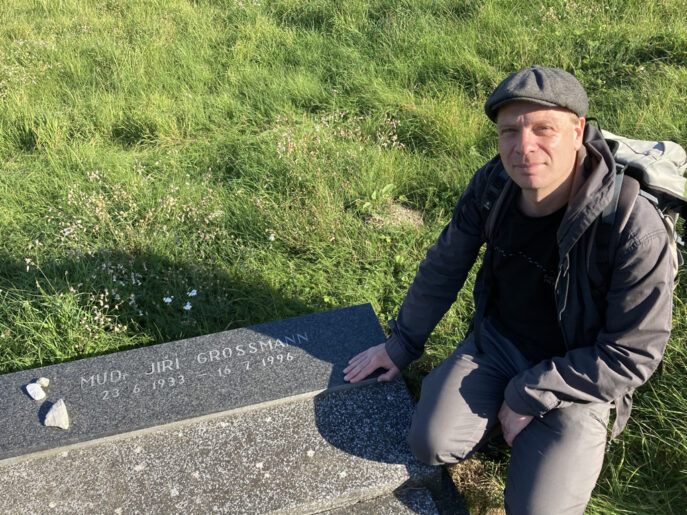
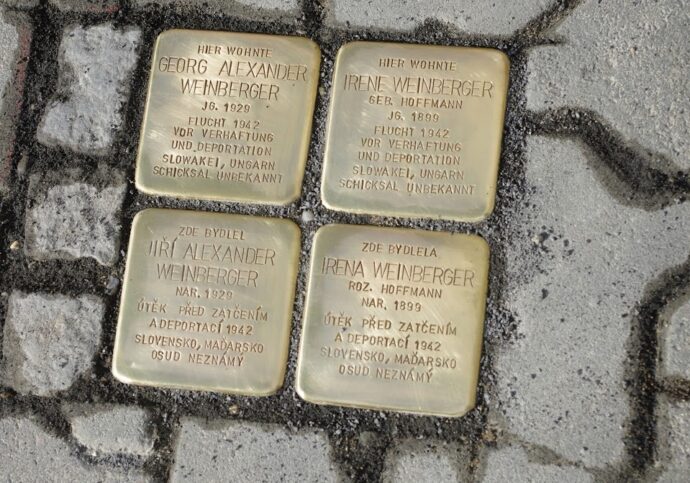
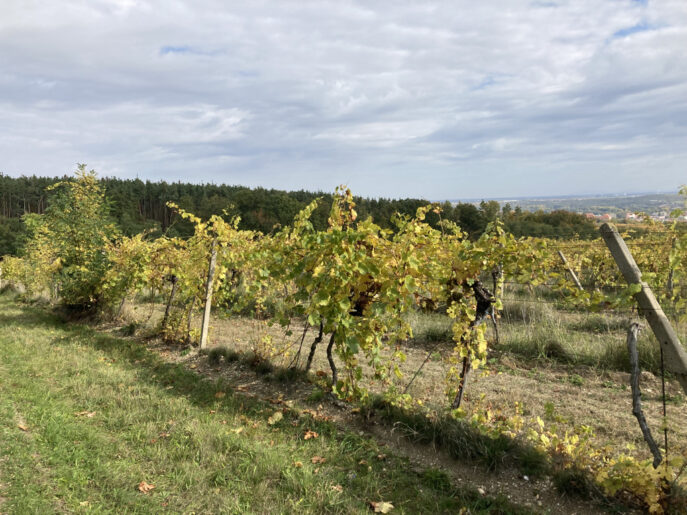


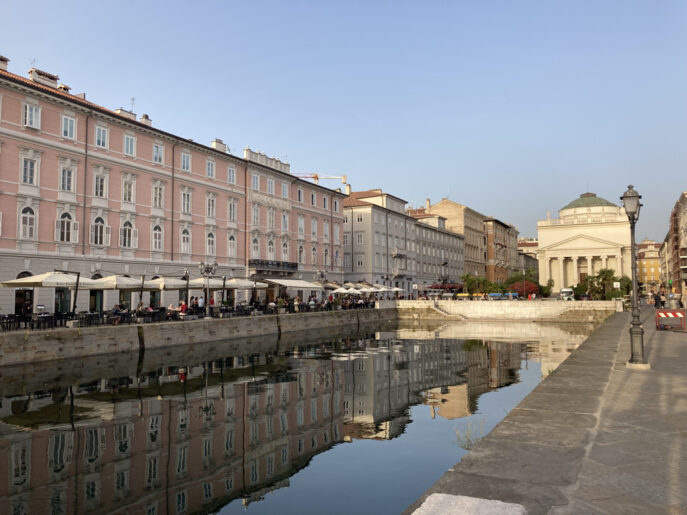
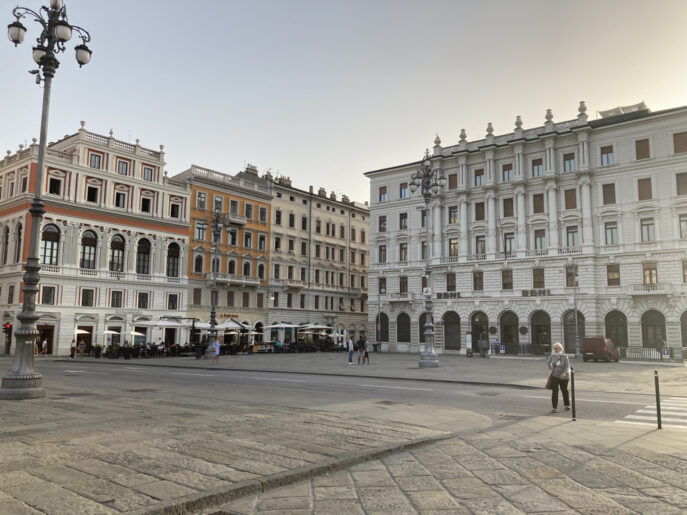
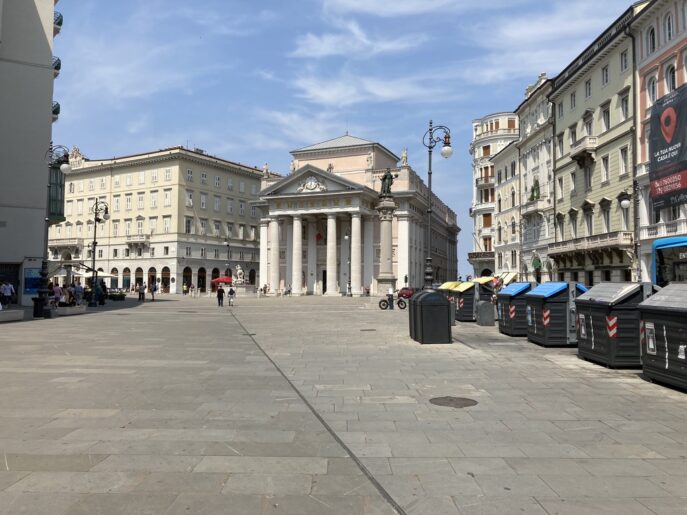
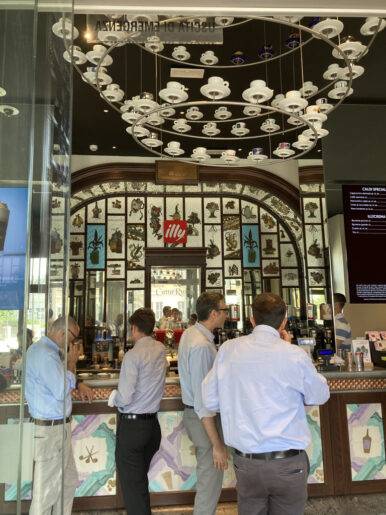
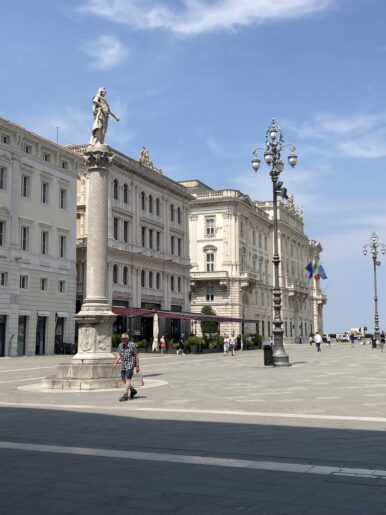
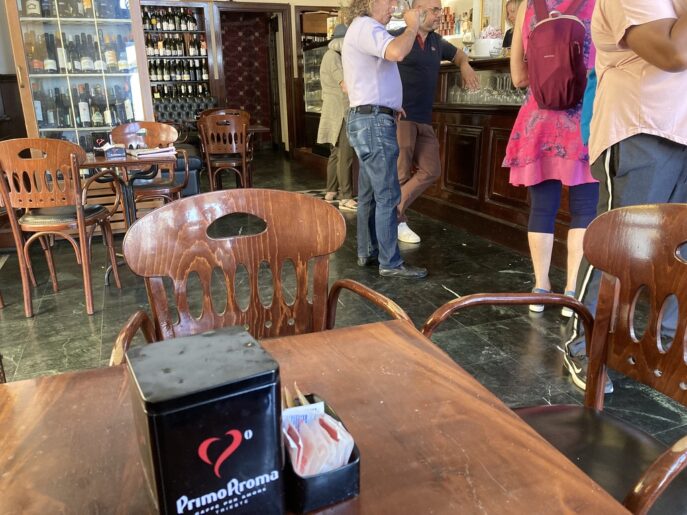
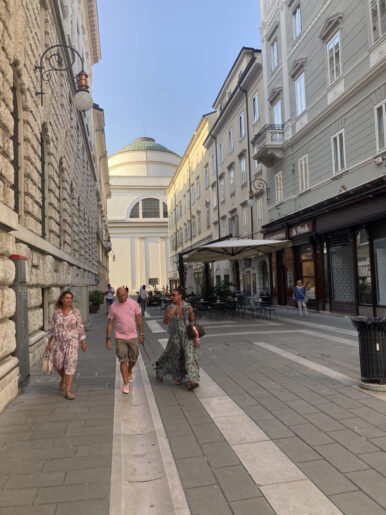
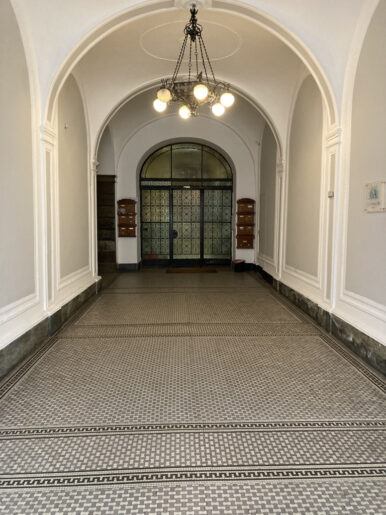
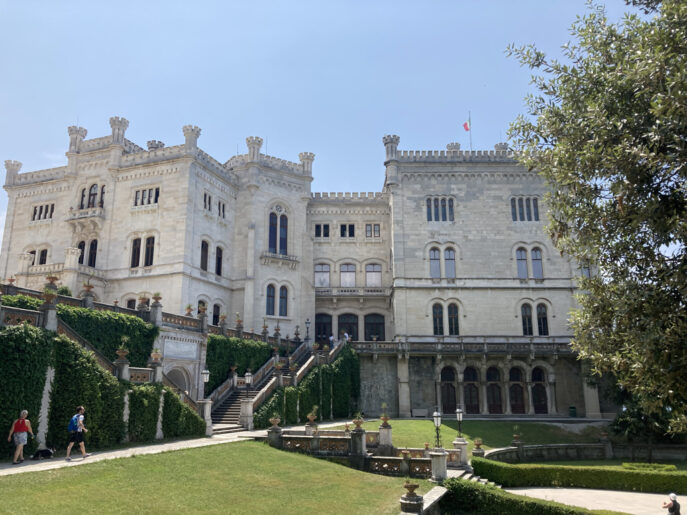
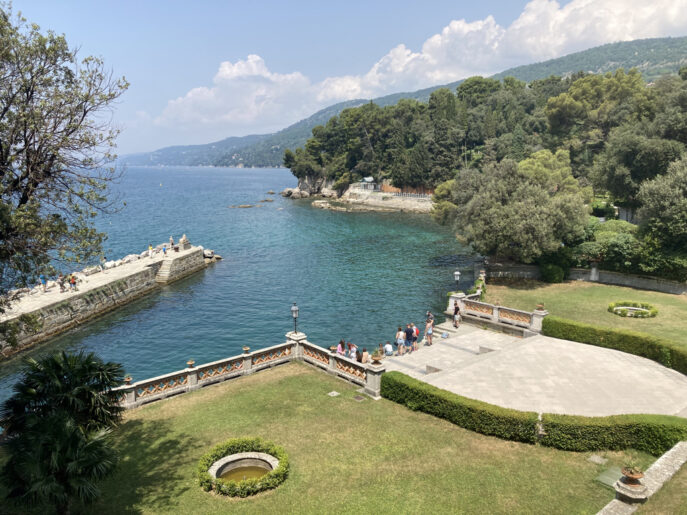
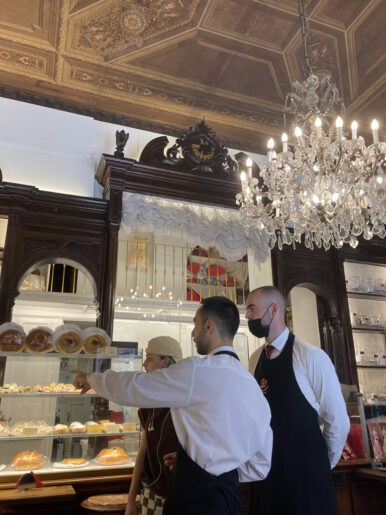
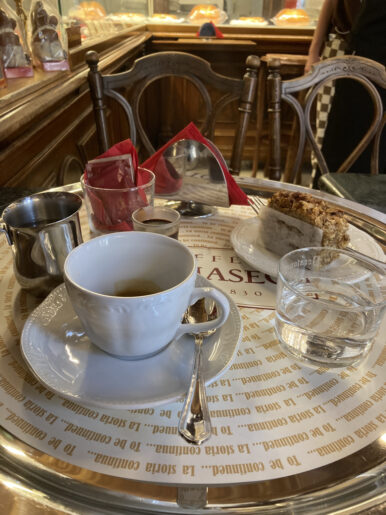
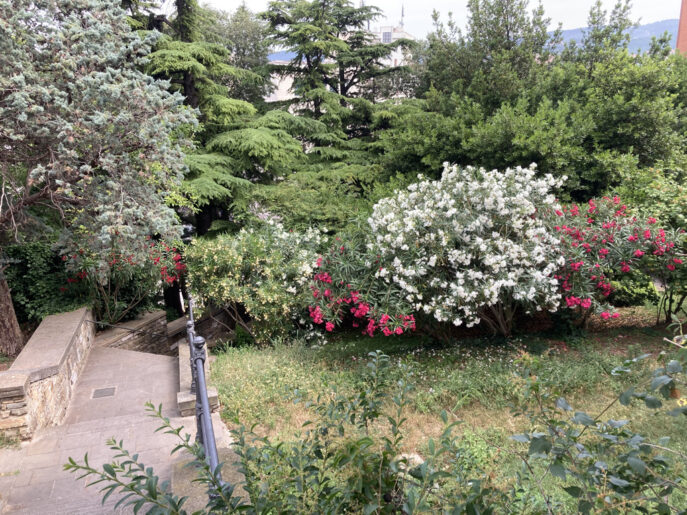
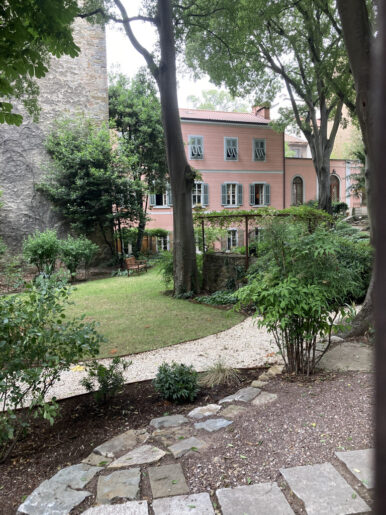
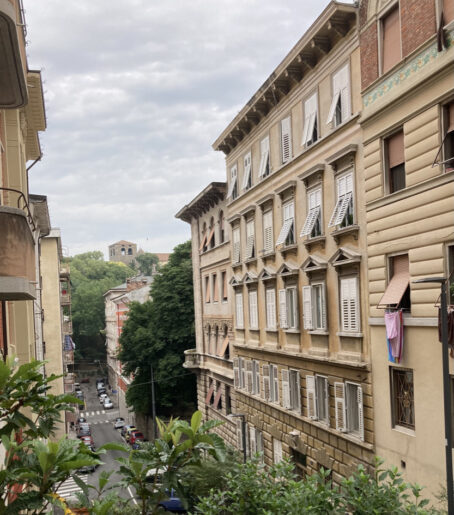
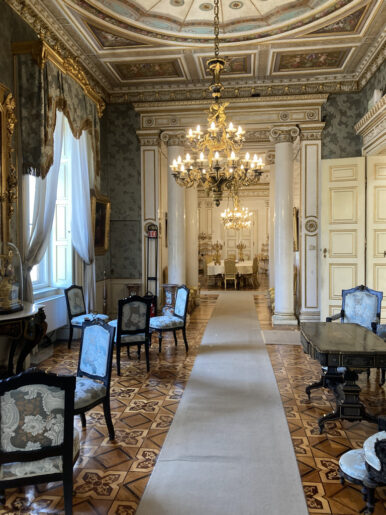
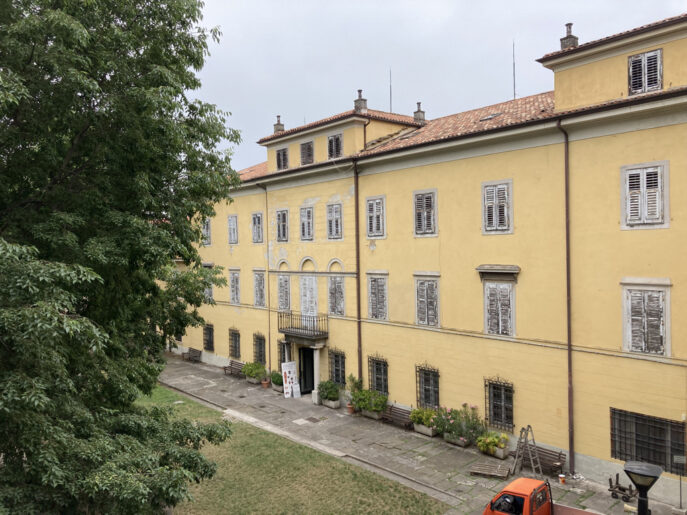
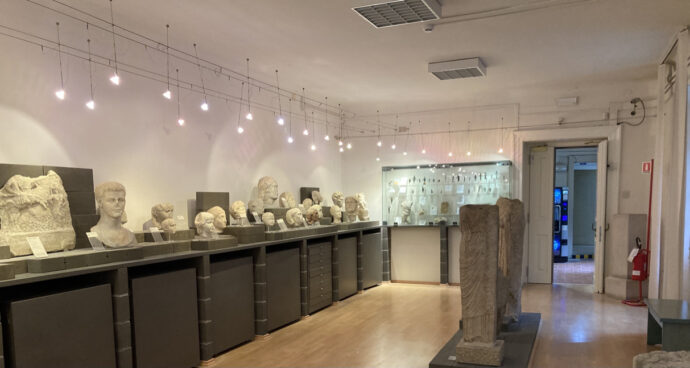
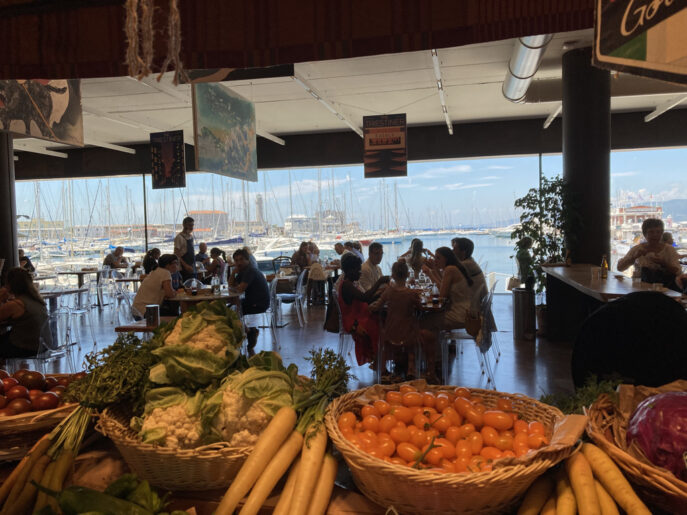
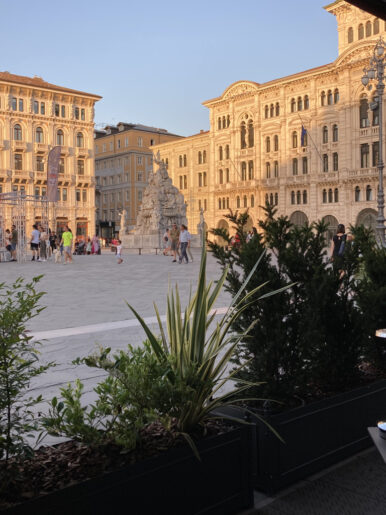
My Mother’s American Life
for Sophie
My sister says that she was “magnetic”.
At our mother’s funeral twenty-two years ago, my sister’s two-year-old daughter, Sophie, cried and said, “My grandmother died, and I didn’t even know her.”
When I remember her, my throat tightens and my heart opens.
Alice Grün was born on March 20, 1928, according to the birth certificate we still have, issued by the Israelitischen Kultusgemeinde, that is the Jewish Community in Vienna. She was her father’s third child and her mother’s first. Her father, a widower, had remarried. Alice was the youngest, the only girl, the only biological child of her mother, and she had two protective older brothers.
As a grown woman, Alice was beautiful, not in an expected or predictable way, but with a strong nose, light skin, auburn, later blond, hair, and blue green eyes that changed with the light. She carried herself with style and a little mystery.
Alice wasn’t tall, but she had a strong presence, engaging and direct, at other times reserved. Maybe she let her guard down with her friends; otherwise she only showed her vulnerability at home. She was aware, fashionable, more so than most women around her, more visually sophisticated, a bit more noticeable. She carried herself differently, perhaps like some of the women I have met in Vienna, and she dressed in an informal, careful, California style: slacks, simple dresses, very little make up. As a young mother, she had her eye on sales at I. Magnin, the fashionable Bay Area department store. In India she wore saris; in Singapore she had dresses made. In her later years, she went to small, interesting shops in Los Gatos or Santa Cruz. She was not afraid of color, occasionally pushing the edges of convention, and she tried to encourage her daughter to dress with a little more daring.
Although not always disciplined in her emotions—Alice certainly did not hold back at home—she was strict in her personal habits. She was up early on weekday mornings. Her house was orderly and clean. She took care of herself and her children.
During their first year in California, in the early 1950s, George and Alice rented a house on the east side of San Jose then moved west to Los Gatos, an older 19th century town at the foot of the Santa Cruz mountains. They bought a new, three bedroom tract house on Azalea Way for $17,000, and lived there with their children for about twenty years. Yesterday, walking on Glenridge Avenue, in an older section of town, I remembered coming with them to look at a larger house for sale, overlooking the downtown, but they decided that paying for our college educations was more important.
Alice’s parents had owned a restaurant in Vienna, and Alice began cooking as a teenager in New Jersey, after school while her mother was at work. She was good at it, occasionally making a few dishes from her childhood, schnitzel, risibisi (rice and peas), red cabbage with apples. Her food was as she was, something from someplace else, mostly American.
Alice spent a lot of time talking to her friends, over coffee at home, and very frequently on the phone. She talked while sitting on her bed, her back against the headboard and her legs straight in front of her. These conversations were lengthy. Calls east to her father or her brothers were briefer and rarer. Cross-country telephone connections were more complex; distance was more significant.
Alice was attentive, considerate, courteous. There were visitors to the house, a varied circle over time: friends for coffee, dinners, parties, lots of conversation. Alice talked and listened; we could hear her laugh across the house. Our friends were welcomed, asked questions, invited to speak. The men were doctors, lawyers, professors, business owners, engineers, military officers (in India). Many of the women were educated but most no longer worked. There were exceptions. Helen Monday was a successful interior decorator; Miriam Resnick co-authored several books. In California, most friends lived nearby, in Los Gatos, Saratoga, Willow Glen; later my parents had friends in Santa Cruz, Soquel, Aptos. Alice was one of the few women working full time (beginning in her forties), cleaning teeth to educate her children. Yet her work never seemed to affect her confidence, her stature, her social sense, her manner, although it affected her outlook. She was nearly always the most glamorous woman in the room.
George and Alice processed people differently; my father liked everyone and enjoyed information exchange; Alice was discerning and more personally engaged. Living abroad, or when we were guests, she told us to watch and follow. Watching taught me when and where I could have elbows on the table, which cutlery to use, where to lean when served, when and how to talk to different types of people and to people I had never met, how to listen. Alice cared how people treated each other, about appearance, about aesthetics, but she did not care about formality. It was the intent, the discipline, the ability to adapt; she expected us to pay attention.
Guests were greeted, listened to, answered. Adults were not called by their first names until we were well into our twenties. As children, we were asked to join guests at dinner parties in the living room, for a few minutes before bed, to say hello, to answer questions. It was not acceptable to speak disrespectfully. At times, Alice was intense, angry, but at home and generally with her husband. I don’t remember angry or rude behavior outside the house.
My mother enjoyed attention; she knew how to draw people in, but her great social skill was her ability to come out of herself, to show her interest, to encourage people to talk, to really listen. She had extremely close friends, and these friendships with other women were very important.
I never saw her encourage a man or flirt. She danced with her husband occasionally in public, and they kissed sometimes, but it was affectionate and hardly suggestive. Neither of my parents spent time alone with friends of the opposite sex. That was their generation; they were not alone in this.
Alice was well liked, and she liked others. That didn’t stop her from being critical; she enjoyed analyzing human behavior. As an older child and teenager, I talked with her often. She had a way of looking at things that commanded my attention, and I identified with her point of view. It took me years to see its weaknesses. Without remembering them precisely these conversations were often while she was sitting in her phone-call position in the bedroom. We talked about people and circumstances, about why people were the way they were and how to handle them. What I learned from her was the enjoyment of understanding what makes people tick.
Occasionally someone found Alice to be “too much”, too inquiring, too many questions, perhaps too insistent, that is, occasionally, insecure. This was particularly true of my sister’s men.
Alice Grün was loved, but history did not give her a protected childhood. Her father, Max, was from Dembitz, a town east of Krakow in Austrian Galicia, a progressive rabbi and midwife’s son. Her mother, Klara (née Landau), came from further east, somewhere near Lviv, the daughter of a wealthy farmer. They were among the many Orthodox Jews that moved to Vienna from the eastern provinces. Neither of her parents was formally educated but they had the training and skills to start businesses and to earn. Max went to work early, moved to Vienna sometime before World War I, and purchased a small apartment building in his father’s name in the Ottakring district. He then served in the Austrian army during the war. Klara moved to Vienna with her family at the beginning of the war, trained as a wig maker (for orthodox women) and started a successful business in Leopoldstadt, Vienna’s largely Jewish 2nd district.
After they married, Klara joined Max in the Ottakring, his two small boys, George and Jack, then baby Alice (1928), Klara’s parents and her sister, Dora. They started a small restaurant on the ground floor, then bought a second building and opened a larger one. My grandmother closed her wig business. Her very long blond hair was gathered up but uncovered. A younger sister married; Dora divorced. Max stopped wearing a yarmulke in the restaurant. The sisters lost their mother in 1934, then their father in 1938.
When the Nazis annexed Austria in early 1938, that life ended. As described by her brother, George, the Gestapo came to the house, while the three children and Dora hid on the floor under the table. The Nazis knocked and tested the lock, until a neighbor told them that no one was at home. Alice was shoved down a flight of stairs at school; a childhood friend was forbidden to see her.
Max was arrested. Klara dressed herself up, walked to the police station and talked her husband out of prison. Didn’t they want the Jews to leave?, she asked. They had visas pending she argued (since most of the family was already in the US). Affidavits and visas were eventually obtained, and in January 1939, the Grüns left in the middle of the night, by train to Bremen, and then on the Hamburg-Amerika line to New York. Their property was seized. Aunt Dora disappeared. Research by our Vienna lawyers in 2021 indicated that she was deported to Minsk in November 1941.
The rest of Alice’s life is an American story. She assimilated, discarded her Austrian clothes and the German language, and spoke English with an American accent. As an eighth-grade graduate she was given the DAR award. Her brothers joined the American army and the invasion of Europe.
Alice, a young immigrant
with her parents in Austria or the Catskills, late 1930’s, early 1940s
According to her high school yearbook, Alice wanted to study psychology. She was admitted to Rutgers University in New Jersey, but her parents did not support a four-year college education. They were practical and wanted her to be independent, and for them that was learning a skill to make a living. Alice enrolled in a two year dental hygiene program at Columbia University in Manhattan. Much later, in her 50’s, after we had finished college, she went back to school and finished her own liberal arts degree at the University of San Francisco.
Alice did not hide her refugee status, but she didn’t discuss it much. It was in the background, a sometimes badge of honor, witness to centuries of victimhood, a trauma that was not readily visible, something in the past, not in our present. She was an articulate and capable mother, clear in what she expected, adaptable, able to handle nearly everything. She knew how to fit-in without being inconspicuous. She conveyed pride, confidence, control. She could be reserved, but often she was friendly and outgoing, warm to those she liked or trusted.
Alice was not always composed at home. On a rainy evening, when we were very young, and George was over an hour late, she was “sure” he’d had an accident or was dead. She was hysterical when he showed up, enraged. Years later, when her daughter was in graduate school, and couldn’t be reached at a late hour, she insisted that George call the New Haven police. (My sister had a boyfriend.) When I told her that I was gay, she was afraid that something terrible would happen, although, to her credit, she worked that out with her therapist. In those years, I did not relate any of this to her history. To her, terrible things could happen, to us they never did.
Alice met George through Max’s sister Ida, who was a close friend of George’s mother. Ida had saved her niece for George and invited her to Queens to meet him after the war. George could not refuse Ida, and he was smitten with Alice, even after a visit the next morning, and seeing her as he said “in the cold grey light of dawn”. He proposed a week later—Alice agreed, though not immediately.
George’s parents were poor; his father was an immigrant from Odessa and a drinker. Alice’s parents were not sure, but Ida vouched for him. She saw something in this one; there were three other brothers she might have chosen. George was a Cooper Union graduate, an engineer, perhaps already working on a graduate degree at Columbia. Several in his family were educated, ambitious, successful, with some idea of their place in the world and their obligations to it. My father carried these values forward, bringing Alice with him.
George and Alice were married in 1948. The photo album shows a large, traditional wedding, with a white dress and bridesmaids, the American kind, but Alice was not the kind of woman who talked about weddings. She was interested in femininity, but her focus was not on baby showers or pregnancies. She wasn’t satisfied with the constraints of traditional marriage. She wanted to create something else for herself and for her daughter, and that is what she did.
There was a housing shortage after the war, and Max and Klara bought a four-unit building in Belleville, New Jersey to house the newly married couple. They offered to give the building to my parents, but George declined, preferring to support his family himself. When her mother died in the late 1950s, Alice received a significant inheritance, but her father asked her to return it, to start a new business. The men managed these things in the earlier years, but over time, George and Alice managed their work and their money together, and they were good at it. In the 1960s, there were arguments at the dinner table about why George hadn’t finished his Phd. Maybe it was the increased salary, or the status, or simply his professional success, but in later years Alice focused more on what she was doing, and on the money she was making.
Newly married Alice, the daughter of affluent parents, went into New York and spent two weeks’ salary on a suit at B. Altman’s; George poured a bucket of water on the floor to scrub the floor army-style. These were (among) their first disagreements. For years, Alice wore the pink and grey tweed suit for air-travel. Dad did the painting or the outside work (until he could afford to pay someone else); mopping floors was no longer his responsibility.
The couple wanted children, and Alice had three or four miscarriages. George reached out to his aunt, Adele, a physician in Manhattan, who referred them to a doctor on West End Avenue, not far from where I live now. Pregnant again with me in 1953, Alice was told to rest in bed for three months. (Her daughter came much more easily.)
My mother loved me intensely, no less. By that I do not mean that she was easy on me; she wasn’t. It is more that she wanted me, felt for me, was concerned for me, saw and appreciated me, believed in me, fundamentally, as I was. My father believed in what his children could accomplish and did what he could to prepare us. My mother understood. By chance or design we were somewhat similar, so she sensed my feelings. This had consequences. It was hard to differentiate from her, but it was reinforcing.
George and Alice moved to northern California in 1954, where George took a teaching position at San Jose State, and their lives changed completely. They created a new existence, independent of their families and their histories, relying instead on each other. They focused on their children, eventually on their friends, their desires and their values. Their first home, a tract house on the east side of San Jose, was likely chosen because it was near campus. There are photos at this house of Terry, their daughter, who was born in San Jose, of us, two children, with Alice’s parents and with George’s mother.
In San Jose, they had pork chops, a freedom they didn’t have near Alice’s family and her rabbi grandfather. For some years, Alice baked them in a white and green ceramic casserole, thoroughly, and with rice that had absorbed the flavorful juices. The chops were always white and dry as cardboard; pork had to be well done. My father didn’t like seafood, so shrimp was a treat when he wasn’t at home. Generally, Alice and George loved good food and encouraged their children to try everything. When we were out, and their food was good, they encouraged us to try it, but I reacted by wanting to protect my plate.
In 1955, my parents bought a new house in a subdivision in Los Gatos. It was a typical ranch house, on one floor, with three bedrooms and an open plan around a fireplace core, vaguely influenced by Japanese design, with huge windows to the back yard and garden. Los Gatos was a nice older town, with good schools and a beautiful location at the foot of the Santa Cruz mountains.
Alice and George in the Sierras, an American couple
Now, Alice and George were no longer immigrants or the children of immigrants. They had simply stepped into the American professional class, like other young couples around them. California, the suburban Bay Area where they lived, was an ahistorical place. Nearly everyone had moved there from someplace else. Their pasts were not secrets, but they did not matter. George was a serious reader of European history, but Europe and the War were far away. Alice did not identify with Austria or with Europe, quite the opposite; she rejected those identities. She did not speak German and banned books about the concentration camps from the house. Judaism was what she kept; it was her history; it underlay her outlook, her value system, and her view of family, although she did not study it until years later. She fused it into her American and California identities, and into her liberalism, and she assimilated.
Alice on Azalea Way in Los Gatos
Alice was always busy, up early, cleaning, running errands, cooking, taking classes, lots of exercise classes. She dieted frequently and made healthy meals; she was discerning. She knew what was good and what wasn’t, and she was very clear about it. There was nearly always meat or fish and always a salad, dressed and tossed in a large, oiled, wooden bowl. She often added chopped green onion and made the dressing herself, a blend of oil and vinegar, salt, pepper, and herbs. There were no bottled dressings; there were no processed foods. Some desserts were too sweet, she said.
My parents liked to eat outdoors, so when the weather was good, we often sat on the back patio. George had built a large wooden trellis. He never added a roof, but Alice planted a wisteria that eventually covered it entirely and with long purple flowers in the spring.
My parents ate out frequently, often driven by Alice’s sense of adventure or work schedule. When we were very young, this was limited and too expensive, but in Singapore in the late 1960s, it was at least weekly, on the cook’s night off. We were at Chinese banquets, food stalls in the car park on Orchard Road, a fancy Russian restaurant for George’s favorite, “shashlick”. In later years, when Alice worked, we ate out during visits home, at any of a number of local restaurants in Los Gatos. There was a very good dessert soufflé, at a French restaurant on Santa Cruz Avenue, the kind of pleasure my father encouraged. When Alice and George moved to La Selva Beach, south of the city of Santa Cruz, in the late 1980s, the habit continued: lunches in Monterey or downtown Santa Cruz, coffee in Aptos. I loved one place in particular, India Joze, modernist, facing a garden, wonderful, now closed.
In the early years in Los Gatos, Alice joined the League of Women Voters, where she made close friends, some of whom we knew years later. But we were her focus. She spent endless hours talking with us, driving us to school, to the library, to her friends, to her mother-in-law’s nursing home, nursery school, music lessons, swim practice (for me), baton twirling or horseback riding (for my sister), religious school, Hebrew school, food and clothes shopping, my Bar Mitzvah. She made sure we did our homework, read my papers and told me where to clarify them. Yet by today’s standards, we had a fair amount of independence. I walked or biked to school and friends’ houses, and stayed occasionally for dinner (if I called). She never interfered with my friendships, even later when they merged with attractions, which she noticed.
with her children, perhaps at Fallen Leaf Lake, late 50s, early 60s
In the 1950s and early 60s, George and Alice were tennis players. They were early members of the Los Gatos Swim and Racquet Club, a utilitarian place with tennis courts where we spent summers by the pool. Alice gave up tennis before we were teenagers, but George was hooked well into his 80s. For Alice, diet, health and appearance were important. She exercised regularly and dressed carefully, mostly informally as I have written, but also in hats, gloves, nylons in the earlier years, lipstick, face creams, and some make up. There was a dressing table with a mirror in her bedroom. Almost the entire bedroom closet was reserved for her. George’s overflow was relegated to my room, or later—perhaps after she noticed my resistance—to a redone hallway closet.
Alice wanted and enjoyed a nice house, and Helen Monday, a close friend, was a talented interior decorator. Furniture, drapes, and carpets were selected and custom ordered. In the early years, everything was new; nothing came from the past. The house was modest, but the presentation pulled together. It was modern, what we now call mid-century. There were no western antiques, no family photos or inherited things; actually they were somewhere, but not displayed until later in her life. Alice enjoyed finding art and objects when we were in Asia. To prepare for a trip to Bali, she read about the artists, and we visited one or two studios where she chose portraits, one of a young man and the other of a young woman. These are now in my upstate library and living room.
Alice at Gail Maddux’s wedding, 1960s
Azalea Way, Los Gatos, 1960s
A party in George and Alice’s backyard, Los Gatos 1960s: from left, Bill Lorell, Evie Lorell, Lilian Nerenberg, Doris Maddux, Edie Mae Stutzman with “Stutz”
Eventually, Alice began to look backwards. After paying for our educations, in the 1970s, she and George bought an old craftsman house on Peralta Avenue, not far from the Glenridge house they had previously declined, a house that reminded her of her parents’ house in Caldwell, New Jersey. In the pantry, she displayed blue onion Czech dishes that her parents had brought from Europe. Photographs and family portraits were retrieved and framed.
At the far end of the kitchen, there was a breakfast table in a windowed bay overlooking the back garden and the pool. It was a square English table, probably bought with Helen, and it was usually covered with a batik cloth, placed at an angle exposing the table’s edges. We had breakfast there in the morning, young adult children visiting. Dad offered eggs, if we wanted them, sunny side up or scrambled. There was coffee, fruit, toast, often bagels, cheese. Sometimes, depending who was there, we’d talk, the two, three or four of us, for half an hour, for an hour or more, sometimes until eleven. Usually it was sunny; it was California; it was intimate, warm, secure, and in those years I did not realize that it wouldn’t last forever.
Our calm, somewhat typical, suburban childhood had ended in the early 1960s, not due to any misfortune but to my father’s choices. He accepted a teaching position in India, through the Agency for International Development (AID), the agency that is now being dissolved by the Trump administration.
As was often the case in the earlier years of their marriage, George came up with the big professionally-related changes. My mother controlled the house, social life, our upbringing.
Yet, as with the move to California, there must have been a sense of adventure. There was no indication that she objected to the India posting, nor to a later two-year position in Singapore. She put a lot of energy and work into them, packing, shipping, vaccinations, a house to empty and rent out, new households to set up. In Asia, there were new schools, uniforms, friends, entertaining . . . entirely new places.
In India, at eight years old, I was enrolled at the Woodstock School, an American missionary boarding school in the Himalaya mountains. My father chose it after reading that the colonial elite had sent their sons away to school. Surprisingly my mother did not object, although she deftly managed my transfer to a local Catholic school after five or six months.
Alice adapted to household servants and guests, made friends, and entertained frequently. In India people stopped by in the early evening, unannounced, for appetizers and drinks; she had to be ready, and we sometimes ate alone while my parents were with friends on the front veranda.
In Singapore social life was more predictable, although our Indian cook, James, complained one evening when asked to delay serving dinner for late-arriving guests. Alice was used to controlling her house and kitchen, but she adjusted to her 60-something year old cook, staying mostly out of his way. He knew how to read, and she gave him recipes. The servants worked for her and for my father, she said. For us, they were adults.
“Your country is judged by your behavior”, she told us. Alice was talented, friendly, articulate, attractive, able to adapt without hiding. In India, she socialized with Indian couples and military officer’s wives, westernized and likely to speak English, in Singapore with Chinese friends, other American women, some Israelis. We travelled regionally, in India and in southeast Asia, later through Europe. Much of this was organized by my mother. In the 1960s the family of an American academic travelled fairly well. The hotels and restaurants were a bit better than those I frequent now. Alice was organized, composed. Only in Austria was she displeased. At a hotel in the Austrian Alps, the owner became friendlier after she saw George’s signature stamp, on a letter, and addressed her as Frau Professor. This did not flatter Alice.
with George and his students at their house in Adam Park, Singapore, 1967-1969
She was an immigrant and her husband the son of immigrants. Despite these outside influences in their childhoods, they were in the background of their adult lives. We were Americans at home or when traveling abroad, but with a talent for adapting. This was a playbook that we children learned well: how to blend in without hiding; how to attract some, but not too much, attention and respect. How to join in while retaining our separate identities. Where or how did Alice learn to do this? Perhaps her mother, or she might have said that this was necessary for a young newly-arrived Jewish woman adapting to American non-Jewish society.
Yet for many Jews, this is not the focus. In New York, we assimilate less; perhaps it isn’t necessary to a sense of belonging, but in places where Jews are a tiny minority, blending-in is common. This was Alice’s experience through most of her life, and it was mine until I moved to New York.
Alice (center), with her father, Max, his third wife, Hannah, George and me, (bar mitzvah), October 1967
Just once, a young American teacher in India, with training in linguistics, asked my mother if she was foreign-born. Otherwise it was not visible, and there were relatively few foreigners in my parents’ California life. There was Bill Lorell, an Austrian, my father’s friend, teaching colleague, and business partner. He taught with George at the City College of New York and again at San Jose State, and he lived not far away in a house in the mountains above Los Gatos.
Bill was handsome, sophisticated, Viennese, ¼ Jewish, enough to flee the Nazis. Alice was friendly but did not identify with him. Their common language was English; she was not an admirer; she did not like the way he went through women—four wives as I remember it. There was Ralph Parkman and his wife, Yetty, a refugee from Holland. Ralph was another colleague of Dad’s, a low key kind of guy, and they lived in our neighborhood. Alice liked the Parkmans but was not close to them.
Alice did not seek others who shared her experience, but her circle of close friends always included American-born Jewish women. In in the 50s and early 60s, she was very close to Rebecca Carter, the wife of another close colleague of my father’s. Alice loved Rebecca, she said, and we were close to her children. Other close friends were Miriam Resnick and Peggy Hall, educated, interesting, informed, open-minded, women whom we knew and loved. In later years, in Santa Cruz, there was Judith Berman, a younger woman, different from the others, but I cannot say how. Many of Alice’s friends were not Jewish, Doris Maddux, Helen Monday, and in earlier years Edie Mae Stutzman, who died fairly young. These friendships lasted for years, for most of her lifetime, all except Rebecca. These women were sophisticated, articulate, friendly, some very attractive. It took a lot of traveling and living in supposedly grander places to realize it; at the time, I had no basis for comparison.
Education and ethics were George and Alice’s stated priorities; we were expected to behave according to their standards and to study seriously, which we did. They wanted us to go to the best colleges possible, but George’s academic salary and consulting earnings were insufficient to pay for the educations they planned. So following perhaps several conversations in their bedroom, after we had returned from Singapore (1969), Alice went back to school and updated her credentials in dental hygiene. She then worked for a number of years, using her salary to pay tuitions and room and board at Princeton and Pomona College. I was then helped with living expenses for business school at Columbia; my sister may have gotten some help in graduate school at Michigan and Yale. My mother was proud of her contribution to what was also a family accomplishment.
Alice knew how to focus her energy, and she was flexible. She moved willingly from the role of young mother/housewife to running houses with servants, and then to cleaning teeth in Los Gatos. All and none of these roles defined her. What did affect her, early, was Betty Friedan’s, The Feminine Mystique, which was published in the early 1960s. Alice saw herself in that book. She went back to work and changed. She valued her ability to earn and shifted the balance of power at home. She asked Dad to take on more household chores. Generally, he supported what she wanted, and the changes were significant, but they were limited. Things at home were still to her standards; once we were out of school, she quit and changed jobs as she wished, a freedom that George never allowed himself. Alice had a strong, reliable husband, and she knew it. In her 60’s, in her Bat Mitzvah speech, she called him her protector, but for some years she resented that she needed him.
Alice had some very interesting work, but she lacked her husband’s education and the years invested. She started late and did not have the skills or confidence to gain seniority or income at his level. At some point in her 60s, she was hired as a consultant. She wrote a report on the computer in the early days of word processing but lost the entire document. George encouraged her to reconstruct it, but she couldn’t. She simply said that she was unable to complete the assignment. This would have been impossible for my father or for her children. Alice was capable, but she wanted more for us than she felt able to achieve.
So she focused on my sister. While Alice’s relationship with Terry was occasionally combative, my sister’s independence was very important to her. In this, she was somewhat like her parents, but without the limitations they had placed. Her daughter earned a doctorate in economics at Yale and became a professor, eventually teaching at Stanford, Harvard, and the University of Western Ontario. My mother said “You can have sex and not get married.” and “You can have a man and not need one.” These my sister did.
Alice’s daughter Terry, Los Gatos, 1970s
Alice was always attractive and social, but in later years her priorities shifted. She was somewhat less interested in assimilation, “fitting in”, beauty, social mobility. These had already been achieved. She became an activist, challenging the authority of the physicians she had previously admired. She was involved in the dental hygiene association, with an eye to increasing professional autonomy. She was appointed to a county health planning board whose mandate was to spread resources among hospitals and avoid expensive duplication. She got involved in health care policy through her job as the health care representative of the chair of the County Board of Supervisors. She and George became pro-gay activists on my behalf (or as an antidote to her fear). She had become more economically independent, as she evolved into the activist wife of her long-time activist husband. In her 50s and 60s, Alice was outspoken in her own right, a phenomenon.
Alice loved the beach, and in the mid 1980s she and George bought a new townhouse near La Selva Beach, south of Santa Cruz. They sold their last place near Los Gatos, and after a few years of driving back and forth over the Santa Cruz mountains, made the beach place their primary residence.
Alice retired from her county job and then made another significant shift. She embraced Judaism seriously and systematically, more than she had previously, focusing on her own religious education and spiritual life. She was active in the reform synagogue in Aptos; she encouraged the synagogue to sponsor gay commitment ceremonies; she ran the adult education program; she studied and, in her 60s, she became a Bat Mitzvah. There was a service and a luncheon; she invited her family and many of her old friends. It was a public event, with a speech, and she described herself as no longer afraid to be a Jew.
Alice loved Santa Cruz. She said that that her years there were the best in her life. She kept her old friends, made new ones, loved walking on the beach and the open-minded culture. When visiting our long talks continued, with her, with her and my father, but always somehow, I felt closer to her. We were rarely four. Terry and I had our own schedules and our own trips. We were together for major events, George’s 70th in San Jose, Alice’s Bat Mitzvah in Aptos, later Dad’s 80th in Palm Desert, and at the end, their funerals. Speeches were part of what was expected ; we knew how to write and how to give them.
Alice at La Selva Beach, Santa Cruz County, California, late 1980s or early 90s
Alice with her brothers, George (l) and Jack (r) Greene
When I was in Santa Cruz, I joined my parents at the synagogue. We walked on the beach, went out to lunch or to dinner, and they cooked. We drove downtown and occasionally to Monterey. My visits were brief; Alice and George could be a bit much for me. I’d break up my trips, drive up to the city for a few days to see friends, then back again before returning to New York. The visits were warm and close, filled with conversation and fairly frequent, perhaps twice a year. George and Alice also visited: my sister in London, Ontario, with her difficult first husband, later with Kim, the wonderful second one. In New York, they sometimes stayed with me, but my apartment is small, and they usually rented somewhere when they came together. Alice and George had family and old friends in New York and New Jersey, so visits with me merged into visits with them.
Alice had setbacks in her 50s and 60s, but she found trusted women therapists to help her. She told me this, presumably she told both of us as was my parents’ practice, but I was not yet mature enough to ask questions. At some point, she said that she had been taking medication, that things had improved, and that she was taking herself off of the pills. Now in her late 60s, Alice was in physical pain, from fibromyalgia, which was hard to treat. She slipped and started to get worse without getting better. Something more was happening, and it was not just physical, but I was in my forties, living in New York, dealing with my own issues.
Mom loved the rabbi in Aptos; he was inspiring, and George was on the synagogue board, but there was disagreement about the low salaries of the synagogue staff. Some members are bragging about their expensive cars and their trips to Europe, my father said. The rabbi would not speak up, a disappointment and contrary to my parents’ values. For Alice it contributed to her internal crisis, and she quit her part-time job at the synagogue.
For a time the fibromyalgia was under control. Alice found a doctor in San Francisco who was helpful, but his methods were novel and his practice was shut down by a California state medical board. Alice felt crushed, abandoned, consumed by pain, anxious, depressed, desperate. Her doctor had advised a move away from the humid coastal climate, from the place that she loved, and she insisted.
She and George looked inland at Scott’s Valley in the Santa Cruz mountains, further south towards Monterey but none of this worked. Los Gatos was now expensive and no longer interesting. So they moved much further south, to Palm Desert, in the late 1990s.
George adapted well, but moving did not help Alice. She weakened further, her strengths receded. “I am just an old woman here” she said. “Nobody knows me or what I did.” She withdrew, stayed indoors, stopped caring for herself—the opposite of whom she had been—and avoided even her closest friends. She told a doctor that she was feeling suicidal, a doctor who didn’t know her, and she was committed for a few days to a psychiatric institution. I was in Los Angeles, and my father asked me to come immediately. I came to the psychiatric ward, touched her feet, and the pain disappeared, but it came back the next day. With the help of a college friend, George organized a stay at the Mayo Clinic pain center, in Minnesota, but that did not help.
Alice had fantasized about marrying her children at the old house in Los Gatos; she had hoped that we would raise families nearby. Eventually, she realized that this was never going to happen. So she had let go of the fantasy, put the house on the market and negotiated its sale while George was recovering from heart surgery. She no longer wanted it and no longer expected the weddings, but she still wanted a grandchild.
There was no chance of my having one. Gay men couldn’t marry; gay marriages with children were not thinkable; we didn’t even want them. My sister’s men were not Jewish; but that wasn’t the issue. Alice would bring the child to visit; she would Judaize her; she would take her clothes shopping. Instead, my sister was a late bloomer, like me, busy with her studies and career, then divorced, so it looked like there might never be grandchildren. By the time Terry was with Kim and pregnant, Alice was sinking. She was leaving, so I knew for sure that the child would come.
Alice has a glamorous granddaughter, but when Sophie was born, it was too late for her to see the glamour or to know her. Sometimes, I feel that I am raising my mother, my sister has said. For some years, when I visited, I took Sophie clothes shopping.
From Minnesota, George flew Alice to Los Gatos, to sessions with a trusted therapist, Bee Olender, but after several weeks, Alice was too much even for B, a survivor of the Japanese internment camps in Indonesia. I joined them in Los Gatos, and we had a family session, a meeting where B encouraged Alice to step through her fear, but Alice said that she couldn’t. B met with me alone, to explain what was happening. This wasn’t unusual for children who had survived the war, she said. There are chemical changes in women as they age, she said; as older survivors, they no longer had the will or the resilience that carried them earlier.
At Peggy and Bob Hall’s house, where we were staying, there were intense conversations, the two and three of us, and then a break, a separation between my mother and me. I cannot remember exactly what was said, but I remember detaching, perhaps to protect myself, something I have never really accepted or forgotten. I had always been close to my mother, had always understood her thinking, but I didn’t want to go “there” with her, not to where she had gone. Facing the loss of the person who had loved me the most, I felt heartless. I wanted her to let go, to take the risk, even of falling into the void she feared, but Alice could not, and I couldn’t bring her back.
My father asked me to help him drive her back to Palm Desert. I declined. They stopped at my uncle’s in Los Gatos, on their way out of town, and Alice apologized to her sister-in-law, Frances, for the years she had not understood her depression and withdrawal. She asked my uncle to drop by and check on me, which he did.
From beginning to end, Alice’s illness lasted six or seven years. George took care of her, occasionally calling for support or help talking with her, but mostly, he handled everything. He wouldn’t put her in a nursing facility; he’d had many good years with her, he said.
Alice had withdrawn, from me, from everyone I think. We no longer had conversations; she asked only a few questions. Was I seeing anyone, she once asked, her constant worry. For months, she phoned us, starting in the morning, to hear our voices, and the calls followed us throughout the day. She wanted to hear her children, but she wouldn’t speak when we answered. Frustrated for both of us, I told my father that I would not talk to her at all if she didn’t stop. But she needs this he said, then he turned from the phone, “Alice . . . ” and told her what I had said; the calls stopped.
The Nazis are outside she told her brother; she rarely left the house. One night she came into the bedroom, wet from the swimming pool, and asked my father to kill her. Eventually George took her to a psychiatrist; she was medicated and calmed down. The pain subsided, and she lived behind a veil, standing to eat, lying in bed. (Yet she pushed herself to dress for George’s 80th and to briefly greet old friends.)
My mother died at 76, while Dad and I were in New Jersey at a party for her brother’s 50th wedding anniversary. The call came as we left. I was sure that she had timed it. At the funeral in Santa Cruz, she returned to me and said, “You and I have done everything we were meant to do together, and I have done what I was supposed to do for you. This is not about you and me. It is about your father, and I want you to support him.”
In leaving she was my mother again, reminding me of what I failed to realize, of what she expected, of what really mattered.
February 2025